


















































Whatever your project, we’ve got you covered!

Ready to start that business you’ve always dreamed of? Or is it simply time to take your current business to the next level? Well, IKEA for Business can help you – in ways that may surprise you.
At IKEA for business, not only will you find all the furnishing, decoration and accessories you need for your business – as well as loads of inspiration and practical advice – but we will also offer you our wide range of services to give you peace of mind.
Welcome to a world of new and endless possibilities where we help you turn all your ideas and dreams into a reality!
Welcome to IKEA for Business Shuwaikh - Plan and order point Shuwaikh, block 2, bank street (St14), building 165
Opening hours
9 a.m. to 10 p.m.


1. It is your destination to have a seamless, inspiring and unique “for business” experience with relevant solutions, one point of contact and endless support.
2. We shall offer you end to end solutions that are inspiring, relevant and trustworthy. Our expert consultants shall facilitate an effortless journey, providing advice, support and sharing expertise.
3. With dedicated account management that understands your needs, we will secure that you leave confident that you have made the best choice.
4. We will deliver a unique experience every time and will be the one and only destination for your business furnishing needs and projects, securing a long-term relationship together.
5. Our experts with you from A to Z. Our team is specialized in specific areas to serve you better. We have experts dedicated to different areas to help you with professional advice and solutions that fit your needs and budget.


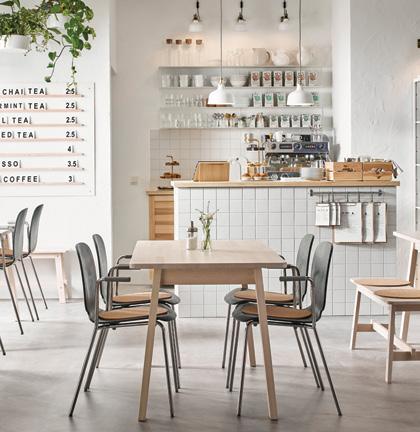


You may contact us for appointment or extra information by:
WhatsApp: +965 9712 6571 / Phone: +965 24770020
Email: ib@IKEA.com.kw / Website: www.IKEA.com.kw











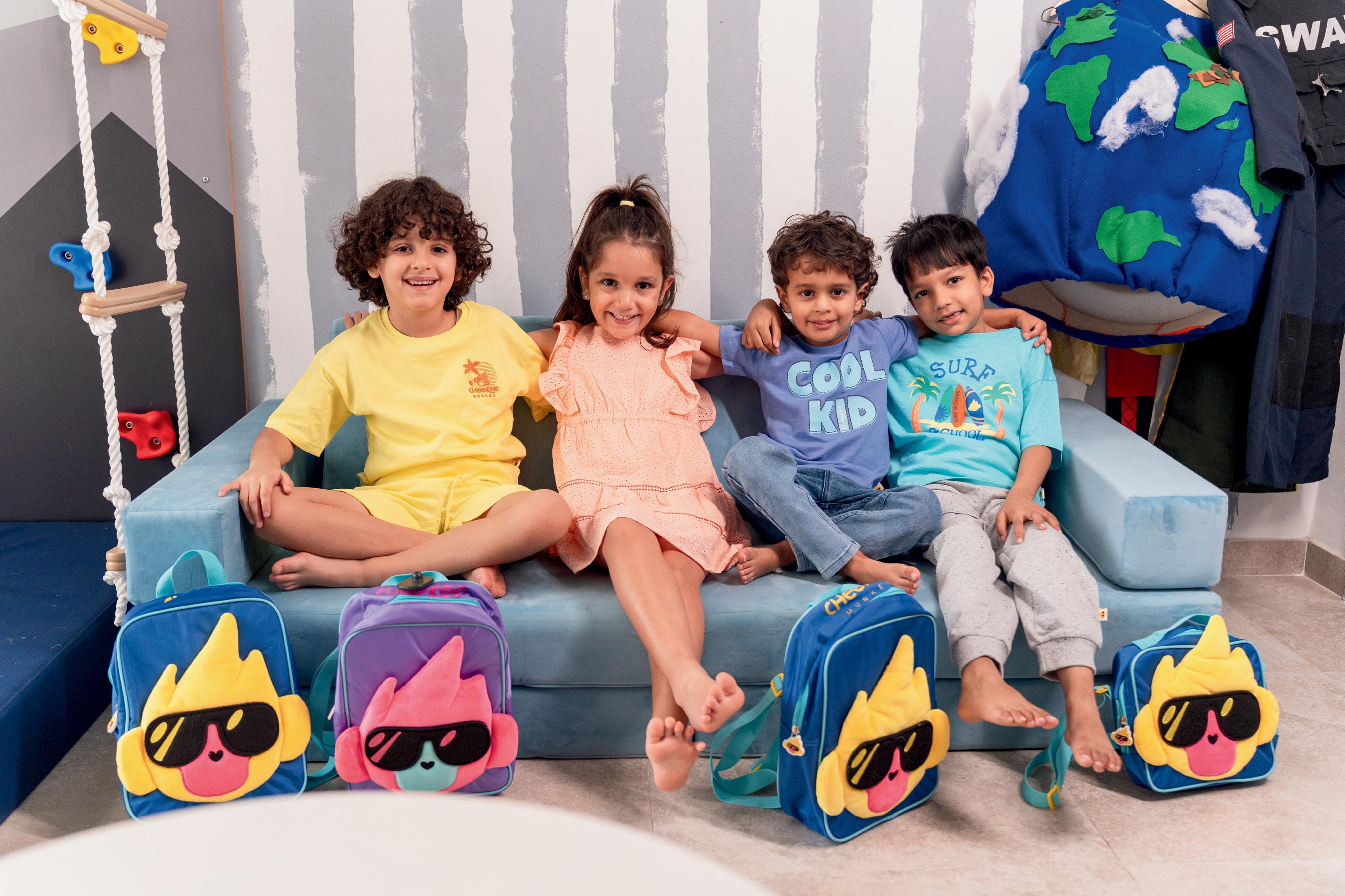




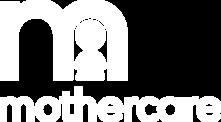




About the Cover: This month’s cover is a collaboration between Ariana Saigh, a sports and cultural photographer based in Pasadena and AOTA a brand built on authentic story-telling, and pure intention and is known for fusing Middle Eastern culture with their products, showing their appreciation and obligation to preserving their proud Arabian heritage. Ariana draws inspiration from her Jordanian and Greek heritage, using her work to explore identity, resilience, and connection. Her passion for storytelling through photography began with family influences and deepened during travels, including a personal project in Jordan to honor her late father’s roots. Through collaborations like her project with AOTA, Ariana captures the unifying power of sports, emphasizing shared experiences that bridge cultural divides.
Hello November, hello winter wardrobe, hello scattered rain, hello sitting outdoors watching the world go by, hello girls who insist on wearing fur lined Uggs even though it’s not really that cold, hello strange young men who love to drive around in the rain with the top down, hello horrible pebbles that destroy our windshields, hello, dining alfresco, hello wonderful Shaheed Park in full bloom!
This month we welcome you into a world of contrasts, creativity, and culture with our eclectic mix of stories. From music and health to community and innovation, our pages bring you unique insights and inspiring narratives.
Discover the vibrant journey of Kuwaisiana, a bilingual rock trio that fuses Kuwaiti and American influences. Frontman Aziz shares how their sound evolved across cities, blending Arabic and English lyrics to explore identity, heritage, and belonging. Meet the powerhouse duo, Reem Nadar and Nour Alkawass, who are flipping the script on traditional agency models. Their venture, Unpopular, prioritizes creativity and quality over profits, building real connections between brands and people—an approach that’s as bold as it is effective.
Kuwait has one of the highest rates of diabetes in the world, making effective management crucial. We spoke to Dr. Thamer Alessa who provides us with essential guidance on managing this condition, from blood sugar control to lifestyle changes, helping readers take charge of their health journey.
If you’re looking for a place that fosters belonging and growth look no further, The Promenade Culture Centre’s Community Program creates a vibrant space for meaningful conversations. Learn how their Circle Talks series brings people together to engage in small-group discussions on topics that foster personal growth and connection.
Ready to hit the road? The iconic 911 GT3 celebrates its silver anniversary with two new versions, blending racing performance with day-to-day usability. Whether you prefer a track-focused model or a refined Touring package, explore how Porsche’s latest offering continues to push the boundaries of custom automotive excellence.
All this and so much more.
Happy reading!
Ahmed El-Adly
Boss
Ahmed El-Adly
Editor
Alia Al Duaij
Operations Manager
Ihab Youssef
Content Manager
Yasmine El Charif
Mixed Media Solutions
Jennifer Cádiz
Design
Shadi Mofeed
Staff Writer/Online Media
Yasmin Gamal
Israa Odeh
Cover By
Ariana Saigh
Communications
Hala Y. Sharara
Syndicates & Sources
Fast Company
LA Times
MCT International
Newsweek
Printing
British Industries for Printing and Packaging
members of:

www.bpaww.com

22
Through the lens of Ariana Saigh, discover how sports become a universal language that fosters connection and unity across diverse cultures. Her photography beautifully captures the essence of identity and heritage, illustrating how shared passions can bridge divides and celebrate our collective human experience. Follow her journey and insights!
40
Blending Arabic and English lyrics, Kuwaiti-American trio Kuwaisiana navigates cultural intersections with a raw, boundary-pushing sound. Frontman +Aziz and his bandmates craft music that resonates with Arab and global audiences alike, addressing heritage, belonging, and social issues. Their unique soundscape bridges nostalgic Kuwaiti influences and modern rock, inviting listeners into an authentic dialogue of identity and shared humanity.
64
Kuwait faces one of the highest rates of diabetes globally. Join Dr. Thamer Alessa as he delves into managing this widespread health challenge. Gain crucial insights on diabetes care, from understanding the condition to long-term health tips.
96
Discover Kuwait’s rich seafaring history with a modern twist at the Radisson Blu Hotel. From exploring the world’s largest handmade dhow to enjoying exquisite dining on a traditional Arabic vessel, experience luxury and heritage like never before.
26
With a 20-year journey from peeling vegetables to innovating Mediterranean flavors, Chef Zeyad Al Obaid has become a culinary leader in Kuwait. As Solia’s R&D chef, he infuses his creative passion into each dish, bridging Mediterranean classics with local tastes. His story is one of resilience, collaboration, and dedication, transforming humble beginnings into a celebrated culinary legacy at Solia and beyond.
44
Circle Talks at Promenade Culture Centre fosters a supportive space for community learning and meaningful connection. Hosted monthly, these small-group discussions cover diverse topics—from mental health to environmental sustainability—led by engaging facilitators. With themes shaped by community feedback, Circle Talks offers a welcoming platform for growth and dialogue.
34
In a market where creativity is often sidelined for profit, Reem Nadar and Nour Alkawass are redefining the game. Their agency, Unpopular, focuses on real connections, fun, and a healthy work culture. Together, they prove that ads can be both enjoyed and effective. Discover their journey and unique approach to branding.
56
Celebrating 25 years of excellence, the new 911 GT3 debuts with racing genes and day-to-day driving. Available in a track-focused version and a Touring package, this model offers customization like never before. Discover the ultimate driving experience with the new 911 GT3.












#1
What: @daze.kw
Info: Froyo just got cooler
Editor’s Note: Protein and a sweet treat in one package


#3
What: @bterior_design
Info: Make your home better
Editor’s Note: Add pizzazz to any space
#2
What: @luxury_gardenq8
Info: The home of luxury gardens
Editor’s Note: Transform your garden into a sanctuary of greenery

#4
What: @shoplouha
Info: High quality framed artwork for your space
Editor’s Note: Showing our love for K-town

#5
What: @nazekgift
Info: Gifts galore
Editor’s Note: The laptop bag is the perfect gift



Capturing Connection, Identity, and Unity Across Cultures
Through the Universal Language of Sports
By bazaar Staff
Ariana Saigh, a sports and cultural photographer from Pasadena, California but currently based in Paris, introduces herself as someone whose work is deeply rooted in her heritage. We came across her work (which you’ve already seen on the cover this month) in a roundabout way. A photo on AOTA’s feed showed an Arab man in a shemagh and thobe playing basketball at night using a shemagh printed ball called to us. We contacted the team and they told us about their gem of a photographer.


AOTA (All Of The Above) is a brand built on five guiding principles, authentic story-telling, and pure intention, and is known for fusing Middle Eastern culture with their products, showing their appreciation and obligation to preserve their proud Arabian heritage. They tie in perfectly with Ariana’s work. Ariana had reached out to them and they decided to fly her out to Kuwait and work with her. “AOTA will always advocate for collaborating with people who share our values,” Tareq Qaddumi, AOTA founder.
“My story is deeply shaped by my heritage,” Ariana says. With a background that bridges cultures—her father, one of eleven siblings, was born in a small village in Jordan, and her mother brings an artistic Greek lineage—Ariana’s journey reflects cultural intersections and personal identity.
Ariana’s path to photography was heavily influenced by her family. Growing up in a hardworking immigrant household, she was exposed to resilience and ambition from an early age. Despite the challenges of pursuing an artistic passion in an Arab American family, Ariana embraced her creativity, with her parents’ support.
“My parents recognized and supported my drive, encouraging me to follow my own path,” she reflects. After earning a BA in Fine Arts from UCLA, Ariana’s curiosity led her to Paris, where she completed an MA in Fashion Film and Photography. She then embarked on a career as a freelance photographer, driven by a passion to document cultures and tell stories.
Ariana’s love for sports photography began with basketball games shared with her father. “Some of

my best memories are of sitting in the nosebleed seats at Lakers games,” she shares, recalling how her father, who immigrated to New York at the age of 11, found belonging through the sport. This connection is what drives her work in sports culture, as she sees it as a universal language that brings people together. “Sports is a universal language that transcends boundaries and brings people together,” Ariana explains. Everywhere she travels, she observes how sports create unity and hope, a theme she continually captures through her lens.
Ariana’s cultural background plays a significant role in her approach to photography. A pivotal experience for her was a father-daughter trip to Jordan, which deepened her appreciation for her roots. In 2023, after the loss of her father, she embarked on a personal project, “My Father’s Footsteps,” to document his childhood village in Jordan. “With each shot and every step through his village, I felt his presence,” she recounts. Through this project, Ariana seeks to capture more than just images—she wants to build a shared experience that honors her heritage and those she photographs.
For Ariana, inspiration comes from creating understanding and connection. She strives to make her subjects feel seen and valued, capturing raw and authentic moments that tell a larger narrative. “I’m driven by the desire to make my subjects feel seen, valued, and strong,” she says. Her creative process starts with understanding the core story she wants to tell, often involving in-depth research and a deep connection with her
subjects. She aims to capture candid, unfiltered moments, revealing the depth, resilience, and beauty of her subjects.
Navigating multiple cultural identities has been a challenge for Ariana. “It’s a delicate balance of empathy and curiosity,” she says. She emphasizes the importance of understanding rather than assuming, allowing her subjects to define their own stories. This approach has helped her build trust and capture moments that reflect authenticity and strength beyond cultural labels.
One of Ariana’s most enriching experiences was working with AOTA, a brand that merges sports, culture, and social issues. “Seeing their Shemagh basketball—the way it blended cultural pride with the sport I love—filled me with a sense of purpose and excitement,” she recalls. Collaborating with AOTA allowed her to explore the fusion of sports and heritage, ensuring that cultural nuances were respected. “I leaned heavily into collaboration with Tarek and the AOTA team,” she says, emphasizing the importance of flexibility and open communication during the project.
Ariana’s project with AOTA aimed to convey the unifying power of basketball. “My goal was to capture how AOTA’s Shemagh basketball represents both the pride of heritage and the joy of play,” she says. She believes that sports can bridge cultural divides and bring people together, a message that was successfully conveyed through the project. “We hoped to show that while our cultures and backgrounds may differ, there is always common ground to be found,” Ariana concludes.
You can watch as Ariana continues to explore the intersections of culture, identity, and resilience, using her camera to tell stories that resonate beyond borders by following her on Instagram @arianasaigh. To purchase her prints visit www.arianasaigh.com.
Whether you're typing on a keyboard, cooking or even sleeping, Galaxy Ring's slim form factor and lightweight titanium frame are so comfortable that you'll forget it's there.




Get to know one of Kuwait’s leading culinary minds and the flavor guru behind Solia’s incredible Mediterranean-inspired dishes
By bazaar Staff
Chef Zeyad Al Obaid has had an impressive 20-year journey in the culinary industry, and his hard work does not go unnoticed. He started from humble beginnings working long hours in the kitchens of the Radisson Hotel peeling vegetables. He discovered his passion for hands-on, creative work in the hospitality field, which was encouraged by his father who always aspired to see Chef Zeyad shine in this field. Today he is part of the Al Hajery Restaurant Group family as Solia Restaurant’s R&D chef. So the next time you’re enjoying your meal at Solia, you can think of Chef Zeyad fondly.
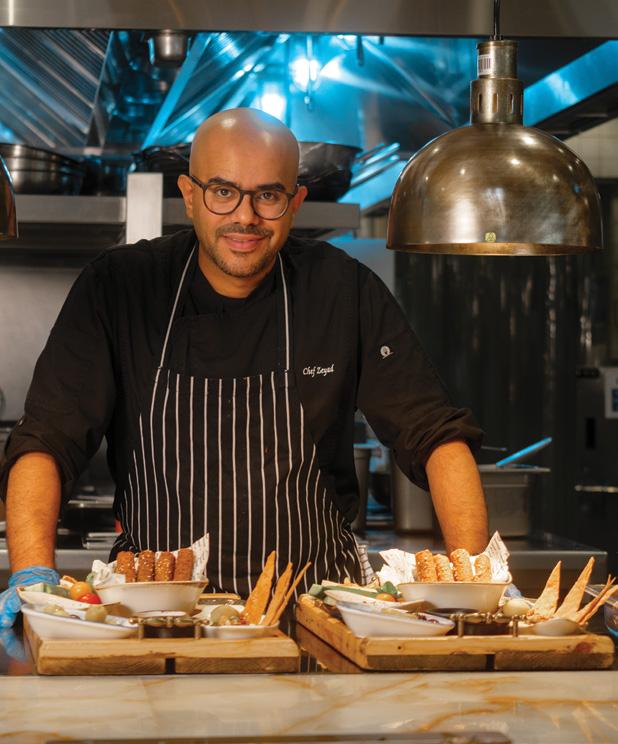

But let’s backtrack to when it all started, in the kitchen, of course! He recounts how he was always drawn to the hands-on, creative nature of working in kitchens, rather than a traditional office job. With his early start in hotel kitchens, he got a taste for hospitality even though Chef Zeyad described working long hours, up to 18 per day, and taking on tasks like peeling onions, potatoes,

a guide, a person who instilled a strong work ethic early in his career. He credits his experience with Chef David as a key reason for him to pursue formal culinary education and leave the comfort zone of Kuwait for a new journey at the Florida Institute of Culinary Arts. Not only did Chef Zeyad make lifelong friends, but he believes that this move truly shaped his vision, honed his adaptability skills, and prepared him well for what he wanted to pursue upon his return to Kuwait.
Chef Zeyad later pursued formal culinary training in the US, where he had formative experiences and built lifelong friendships. Over the years, he has worked his way up, taking on dedicated roles in corporate kitchens such as P.F Chang’s and Texas Roadhouse, spearheading the menu at concepts like The Breakfast Club and Fogoda (which is still functioning), and eventually joining Solia as an R&D chef. Constantly citing freedom to create as his constant muse, Chef Zeyad believes that this alone doesn’t account for success, as he believes in the importance of collaboration.
and shrimp when he first began. He said he was “happy” doing this “dirty work” in the kitchen, as that is where anyone starts in the industry. Chef Zeyad emphasized that he enjoyed the hands-on, multitasking nature of the work, rather than just sitting in an office.
Every aspiring young chef has a mentor and Chef Zeyad recalls Radisson Hotel’s Head Chef David as
Chef Zeyad thrives in the collaborative, supportive environment at Solia, where he has the freedom to experiment and develop new dishes that balance Mediterranean flavors with local tastes. Chef Zeyad succinctly summarizes his role, “It takes a lot of brainstorming, and Solia’s kitchen at The Avenues is like my second home. It’s a playground to create and I love working alongside the other chefs here.”
Upon first joining the team, he got to work, refining the menu and better adapting Solia’s Mediterranean soul to local palates. “People here did not have the right “mindset of Mediterranean” cuisine, as the perception around this cuisine is built around what we know from our side of the Mediterranean, ” He tells us. “So I got to work, thinking of different ways of bridging Solia’s menu items to speak to local customers.” Most importantly, Chef Zeyad was empowered to make these changes thanks to his seasoned experience in the field and the support he received in-house, and the results were quickly seen. When he’s not at Solia, he is supporting Al Hajery’s various culinary concepts, adding, “I joined Al Hajery as a guy who wants to create tasty food, regardless of the concept or cuisine. If you limit yourself to something then creativity is stifled. I love collaborating for Jafra, Sutis, Danish Bakery, and even the company’s Central Kitchen.”
Pass by any time during weekdays or weekends at Solia at The Avenues or Murouj during the cooler months, and it’s always buzzing with action, especially in the mornings. Diners in Kuwait love the menu, which is true to its Mediterranean soul but also caters to beloved local classics, the theater of the food presentation, and the bread and olive cart.
When it comes to the culinary scene in Kuwait, Chef Zeyad appreciates quality and consistency when it comes to staples like burgers, pizza, and pasta, regardless of whether it’s a casual takeout or a high-end establishment. He’s particularly drawn to well-executed smoked meats, and great wings, and is a huge fan of Mexican and Asian cuisine which makes him hark back to his days working in the kitchens at P.F. Chang’s. For loyal bazaar fans, you will remember that Chef Zeyad loves making sandwiches, and he still believes that sandwiches will forever be the ultimate comfort food.
From humble beginnings to shaping the culinary direction at Solia, Chef Zeyad’s path is marked by grit, passion, and relentless pursuit of quality. His story stands as a powerful example of how dedication and a love for craft can elevate unassuming beginnings into an extraordinary legacy in the culinary world.


By Stephanie Vozza
It’s no secret that artificial intelligence is changing the way we work. With more and more simpler tasks being automated, humans are left with more high-level cognitive work, such as idea generation. If you want to excel in the new era, you’ll need to radically transform how you work to maximize brain efficiency, says Dr. Mithu Storoni, a neuroscientist and the author of Hyperefficient: Optimize Your Brain to Transform the Way You Work.
The problem is that we still follow a psychological and physical infrastructure of work that resembles the era of assembly lines, which doesn’t foster or facilitate the type of work needed today.
“Instead of generating 100 bad ideas, we have to come up with that one single good one,” says Storoni. “In order to enhance the quality of mental output and not just keep the mind working continuously, producing large amounts of output of mediocre quality, the mind has to work in a very different way.”
Start by Rethinking Working Hours
Leaders previously measured productivity in terms of how many hours an employee spent at work or the number of abstract targets they reached. As a result, people worked in a way where the quantity of work mattered most.
But that type of output doesn’t fit in the era of AI. Instead, we have to make a psychological switch, structuring each workday for quality instead of quantity.
“Each workday has to be tailored in a way that emphasizes and enhances mental output,” says Storoni. “To do that, we have to follow a completely different template.”
Start by discarding the old method of continuous work throughout the day. Research shows that when the mind works for long hours at a time, the mental output is of a lower quality, says Storoni.
“The time you’re working continuously is a big barrier against generating quality mental output,” she says. “You’re much less likely to make good decisions and come up with creative ideas this way.”
Continuous work impairs creative idea generation and high quality, sophisticated cognitive work. Because of that, it’s much better to work in bursts, giving the mind a lot of rest to make that work of quality rather than quantity. Storoni recommends using work sessions that are about 90 minutes long, attacking the hardest part of the task in the first 20 minutes and moving to the slower, easier work during the remaining time.
The time of day will also make a difference, depending on the type of work you’re doing. As a result, managers should consider the principal area that a team or individual is working on rather
than imposing the same work schedule across a team or an organization, says Storoni.
Data suggests that it’s better to work on tasks that involve creativity, imagination, and problem solving during the first few hours of the day and again right before you go to sleep. The middle of the day is better for working on something that needs convergence of focus, such as implementing an idea you already have. Storoni recommends scheduling two focused work sessions during the day, one from middle to late morning and another from the middle to late afternoon or early evening.
In between the focused work sessions, make time for a nap or for easy work that doesn’t require much creativity or focus.
Build in breaks to maximize brain efficiency
The mind also needs breaks, but the type you take is critically important. The first goal of taking a break is to restore and rejuvenate the brain so it no longer fatigued. When the brain becomes fatigued, the information processing pathways inside the brain start taking inefficient routes, says Storoni.
The second goal is to dial down your state of mind. Storoni says when your mind has become stressed, hyperactive, or distracted from the work you’re doing, it builds up cognitive overload. You need to release that overload.
The third goal of a break is to put your mind in the correct state to begin work again. Before you take a break, Storoni says you should ask yourself, “How do I feel? Do I feel tired and wired? Or do I feel tired and not wired?”
“Your mind, unlike muscle, doesn’t rest the moment you stop working it,” says Storoni. “If you’re in the gym and stop lifting heavy weights, your muscle relaxes. But if you’re in a busy office and you walk out for a break, your mind hasn’t walked out with you. It’s still on your office chair, especially if the work you were doing left you with a heavy cognitive load that you’re worried about.”
What type of break to take
If you’re tired and wired, Storoni recommends choosing a break that actively dials your mind and your physiology back into a state of relaxation. This is a good time to go for a brisk walk, engage in breathwork, or play a mental game like Tetris. “Something that grips your attention just for long enough for you to forget what you were just doing,” says Storoni.

If you’re tired and not wired, your brain will behave more like a tired muscle, falling into a resting mode easily. You can sit quietly and daydream, take a slow walk, or read a relaxing novel.
The landscape of knowledge work has radically changed, and Storoni says we need to radically change the way we work to enhance the quality of human performance.
“We need to come to the point where we measure how successful a day has been, not by the number of hours and not by the number of boxes ticked, but by the quality of solutions you’ve come up with, the quality of ideas you’ve come up with, and the quality of your mental output.”

Every Tuesday starting September 24
Saleh Bataineh has taken the helm as the new General Manager at Waldorf Astoria Kuwait, bringing with him over 25 years of expertise in luxury hospitality. Known for his leadership and a history of success in the industry, Bataineh is set to make a strong impact in his new role.
Bataineh’s career has spanned multiple global markets, including Jordan, Canada, the UAE, Egypt, Qatar, and China. He has consistently delivered operational excellence and outstanding guest experiences in his roles. His leadership style is grounded in a passion for service and a commitment to fostering a culture of integrity, care, and high standards.
As he steps into his new role, Saleh Bataineh said, “I am honored to join Waldorf Astoria Kuwait and lead this exceptional team. My focus will be on continuing the tradition of excellence that Waldorf Astoria Kuwait is known for, delivering unparalleled guest experiences, and fostering a warm, inviting environment for both guests and our team.”
Before joining Waldorf Astoria Kuwait, Bataineh was General Manager of Sharq Village & Spa in Doha, where his tenure was marked by significant revenue growth, enhanced guest satisfaction, and numerous accolades, including the prestigious 2024 Haute Grandeur Global Excellence Award for Best Newly Appointed General Manager in the Middle East. His prior roles include leadership positions at several properties, such as Hilton Salwa Beach Resort & Desert Falls Waterpark, The Ritz-Carlton Hotel in Doha, St. Regis, and Katara Hospitality in Doha, as well as Grand Hyatt Amman, and Four Seasons properties in Cairo, Beijing, Amman, Dubai, and Toronto.
Waleed Alsharian, Chief Executive Officer of Mabanee, commented, “We are delighted to welcome Mr. Saleh Bataineh to Waldorf Astoria Kuwait. His extensive experience and leadership in the luxury hospitality sector will undoubtedly be valuable assets as we continue to build on the hotel’s success. We would also like to thank Mr. Kemal Sirtikirmizi for his valuable contributions, leadership, and dedication since the hotel’s launch in Kuwait.”
At Waldorf Astoria Kuwait, Bataineh will be instrumental in maintaining the hotel’s standing as a world-class luxury destination, which delivers the anticipatory service the brand is known for. His strategic mindset and hands-on leadership will continue to elevate the guest experience, ensuring that the property remains a symbol of elegance and sophistication in the region.
Please call +965 2477 4444 for more information and reservations, email reservations.kuwait@waldorfastoria.com, or visit kuwait.waldorfastoria.com. Follow the hotel @WaldorfAstoriaKuwait on Instagram for the latest updates.
By bazaar Staff
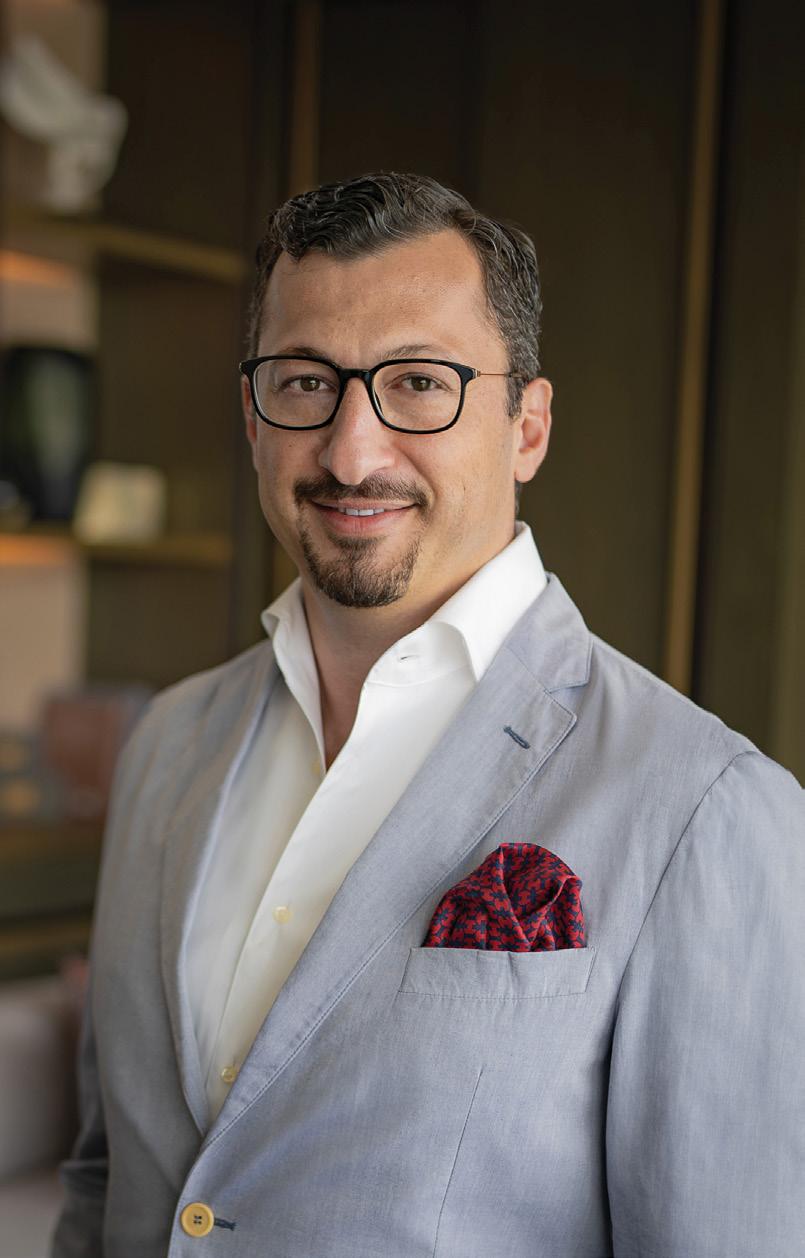


You can’t sit with Reem and Nour the dynamic duo behind The Unpopular Agency
by Yasmin Mostafa
In today’s fast-paced and highly competitive market, branding and communications agencies play a crucial role in helping businesses stand out, connect with their audience, and build lasting relationships. With consumers being more selective and brandsavvy than ever, these agencies craft strategic, creative solutions that make brands memorable and meaningful.
If you’ve been paying attention you will have noticed the stellar rise of the latest agency in Kuwait called Unpopular which is spearheaded by two super stars, Reem Nadar and Nour Alkawass. Unpopular is a team of curious creatives inspired by human nature and behavior to build real connections between brands and people. In our region, the ‘popular’ way is all about chasing profits over creativity. They flip that—prioritizing quality and passion for the work they do. It’s an ‘unpopular’ approach, and that’s exactly why it works.
“I’m a storyteller at heart, and by profession, a creative director in advertising, design, and marketing. I’ve worked with top regional and international agencies before starting Unpopular, my own creative studio. I’m also a content creator who’s built a niche community of curious thinkers with the best sense of humor. Basically, I blend my love for marketing, design, and social media to create content that sticks—both for myself and my clients,” Reem tells us.
Nour Alkawass on the other hand is the vibes and events wizard, with 15 years under her belt in Kuwait’s corporate market & the music-cultural scene locally and globally possessing creative expertise for event planning and execution. She is also the founder of ‘Not Necessarily Famous’, a management and booking agency that has played a pivotal role in helping artists find their identity and secure performance dates to showcase their art. Their foray into their careers were accidental in both cases. “It all started by accident. I grew up wanting to be an actress, but after high school, someone randomly suggested graphic design because I liked sketching storyboards of my daily life. Turns out, graphic design isn’t about drawing at all—but it’s even better! I fell in love with creative thinking and design, and that led me to big agencies where I launched my career. From that point on, I knew this industry was the perfect blend of everything I loved,” Reem explains. “My journey started as a hobby in my early 20s when I organized entertainment events with friends. It was during that time I realized my passion for the field and knew I wanted to pursue a career in event planning and entertainment,” Nour elaborates.
Reem and Nour explain that they have three goals in mind: make people feel things about brands, raise the bar in creativity and design— making everything more fun, memorable, and effective. They also want to prove that ads can actually be enjoyed, not avoided.
And the final goal is to build a sustainable, healthy work culture—solving the issues they once faced as employees while externally they focus on creative problem-solving, not just profits, to add real value to their clients.
“The agency was born out of frustration—both from employees stuck in the corporate grind and clients feeling let down by agencies. We wanted to prove that a healthier work environment doesn’t risk business but actually boosts it. A happy, respected employee adds way more value. As for

clients, we saw their struggles firsthand—quality dropping after contracts were signed, and agencies not truly listening or guiding them. We knew we could do better, for both sides,” they explain.
They decide to team up because they have a relationship built on love, respect, and trust through a friendship that blossomed in 2016 and has served as a strong foundation as business partners. They also have shared values and a singular vision that has made it easy to align on strategy and how they wanted to run the business. Their backgrounds naturally complement each other—one comes from creative advertising and design, while the other specializes in events, talent management, and production. Together, they cover more ground and broaden the range of services their agency offers.
Their personalities are pretty different, so they definitely have moments of playful bickering, but that’s what keeps things interesting. They balance each other out. They tell us that the best part is how much they learn from each other’s expertise, and no matter what, they always find a way to have fun doing what they love while pushing creative boundaries together.
“We’ve worked on some awesome projects throughout our careers, but for this, we’re focusing on the recent work we’ve done under Unpopular, which is still new in the market. A favorite so far is
a campaign we did for Chuck’s Burgers, one of our local F&B clients. We used static outdoor megas that, when viewed from a moving car, created an animation—kind of like stop-motion. It was a fun stunt,” they tell us.
As for their most challenging project yet, they think it is the campaign for the Primary Health Care Corporation (PHCC), which operates under the Ministry of Health in Qatar. The challenge was turning a serious, medical governmental message into something engaging and memorable, but they found a way to create buzz and make their client really happy with results.
Unpopular envisions itself as more than just a creative agency; it’s a brand that embodies a vibrant and playful lifestyle. With plans to launch a merchandise line, featuring statement apparel, art pieces, and home decor, Unpopular aims to cater to a niche audience with quirky, creative tastes. In addition to this, the agency intends to host regular entertainment events and creative workshops, fostering a community that celebrates creativity and fun. Over the next five years, Unpopular aspires to build a solid track record of memorable experiences and successes, both for its clients and its employees. By leading with passion and innovation, they aim to transform the industry, making creativity, quality, and enjoyment the new standards.
How would your father describe you in one word?
Reem: I actually just called my dad to ask, and he described me as an ‘icon.’ A bit dramatic, if you ask me, but I won’t deny it gave me a warm fuzzy feeling inside.
Nour: Resilient.
How would you describe your father in one word?
Reem: Lighthouse.
Nour: Laid-back.
What is the most ridiculous question you’ve ever been asked?
Reem: When I was applying for a tourist visa, the application asked about my faith and religious sect. Totally irrelevant.
Nour: Why don’t you have kids till now?
What is the most spontaneous thing you’ve ever done?
Reem: One of my most spontaneous moments was when I was younger and launched a kindness initiative after noticing how socially disconnected our society had become. A few friends and I started by handing out flowers and balloons to strangers, along with ‘kindness cards’ encouraging them to pay it forward. What began with just five of us quickly grew to 40 volunteers, all dedicated to spreading joy and connection. Our efforts even caught the attention of local news and talk shows, proving that a little kindness can truly make an impact.
Nour: Passing borders in 2006 and during the war (from Syria to Beirut) to see a friend for a few hours.
What is your theme song?
Reem: The Crash Bandicoot Main Theme.
Nour: Coldplay - Adventure Of A Lifetime.
What word in the English or Arabic language do you wish you had invented?
Reem: I wish I had invented ‘procrastination.’ It’s such a noble-sounding word for my lifelong commitment to putting things off until the very last minute. It makes it sound like an art form rather than a guilty habit.
In Arabic, I would choose “ ”. Very expressive and sounds funny.
Nour: Fatteh.
Where would you like to live?
Reem: Somewhere we don’t hear about on the news.
Nour: Somewhere away from all the human beings LOL.

What is your dream retirement location?
Reem: I once thought my dream retirement would be in Europe, with its stunning landscapes, quality healthcare, and fun recreational activities. Lately, though, I’ve been increasingly attracted to Arabic cultures and communities. Egypt has really captured my heart. It has everything I’m looking for—fascinating history, a vibrant lifestyle, and a beautiful community filled with people who have a legendary sense of humor. I can absolutely picture myself thriving there.
Nour: The Caribbean
What is the first famous quote that comes to your mind?
Reem: “The truth is, everyone is just winging it.”
— Ricky Gervais
Nour:
Which animal best describes your perfect partner, be it in business, or in life?
Reem: My perfect partner would be a cat— independent, curious, and a master of napping. They’d keep me on my toes, because just when I think they’re in my lap, they’re plotting world


domination. But they’d always show up when I need a pick-me-up, curling up next to me like, ‘I’ve got your back!’ And if things go south, they’ll just give me that classic look like, ‘Not my problem.’
Nour: Horse – Strong, reliable, and free-spirited. I want a supportive partner yet allows freedom to grow and explore.
Do you miss anything from your childhood and if so, what is it?
Reem: Not having to adult.
Nour: I miss everything about my childhood. The simplicity, respect, and above all humanity.
If you could change your name, to what would you change it?
Reem: I’d change my name to ‘WatWhyHow.’
Sounds Asian, right? Just imagine the confused looks—that would be a great conversation starter. It’s also the perfect name for a curious mind like mine that can’t stop asking questions.
Nour: Honestly, I wouldn’t change anything about it.
How would you describe your handshake, in one word?
Reem: Memorable.
Nour: Warm.
What is the toughest part of your character?
Reem: Overthinking. I could probably win an Olympic gold medal for turning a simple thought into an existential crisis.
Nour: Being stubborn sometimes or most of the time haha!
Who is your favorite historical figure?
Reem: I have many favorites, but right now, Salvador Dalí stands out. He pioneered surrealism and was one of the first to break away from the constraints of realistic visualization. That bold leap in creativity truly reshaped the artistic landscape.
Nour: Ibn Battuta.
What in the world do you least desire?
Reem: Getting a disease that forces me to give up tomatoes. I mean, what kind of life is that?
Nour: Fame.
What do you think is lacking in the world, which [if there were more of it] would make the world a better place?
Reem: More people who aren’t obsessed with money and power like they’re oxygen. Maybe if we had a few more folks who didn’t treat cash and control like a religion, we’d actually start solving real problems.
Nour: I believe the world would be a better place

with more empathy, kindness, and creativity. Empathy fosters deeper understanding, kindness encourages positive interactions, and creativity inspires innovative solutions to global challenges. Additionally, strengthening human connections and embracing authenticity would lead to more genuine relationships and a more harmonious society.
Why do you think most people who do, like you?
Reem: I’d like to think it’s my authenticity. Either that, or they’re just here for the dark humor and snacks.
Nour: My Kindness and Big Heart.
Finish this sentence: “Happiness is…”
Reem: Happiness is the brief moment when you realize you forgot your problems—usually right after you’ve found the remote.
Nour: being true to yourself.
Get ready to see brands and advertising in a new light by following @itstheunpopular on Instagram.







By bazaar Staff
In a world of fusions and contrasts, few bands capture the dynamic nature of dual identity like Kuwaisiana. A bilingual rock trio with a Kuwaiti-American pulse, Kuwaisiana takes cultural hybridism to new levels, blending Arabic and English lyrics to explore the intersections of identity, heritage, and belonging. +Aziz, the frontman, shares how the band evolved from an eight-piece ensemble in New Orleans to a tight trio in Seattle, constantly refining their sound and purpose.

“My upbringing in Kuwait in the ‘80s and ‘90s was filled with change,” +Aziz recalls, “a time of cultural shifts, tension, and uncertainty. Rock music offered me an outlet, a visceral connection that wasn’t available in the classical piano performances of my youth.” This tension, and a thirst for raw expression, ultimately shaped Kuwaisiana’s unique sound, which combines traditional Kuwaiti references with modern rock influences. Their Mishriff EP is a testament to this journey, bridging the nostalgia of 90s Kuwait with
a contemporary Arab-American experience.
The band’s evolution from a large New Orleans ensemble to a streamlined Seattle trio has honed their creative process. “This shift forced me to rethink what Kuwaisiana could be,” says +Aziz.
“With Yousef and Brian, we found an incredible dynamic where each of us brings something unique—Yousef’s music education background and Brian’s technical expertise in sound engineering. It’s allowed us to produce a sound that’s both raw and polished.”
Kuwaisiana’s music resonates deeply with Arab audiences and beyond, addressing themes like gentrification, climate change, and human rights. +Aziz is deeply motivated to tackle these issues, seeing music as a responsibility to raise awareness and connect people across cultural divides. Tracks like “Gentrification” and “Lost Empire” weave in Kuwaiti childhood songs and urban landscapes, creating a sound that feels both familiar and radical, pushing listeners to reevaluate Khaleeji identity and heritage.

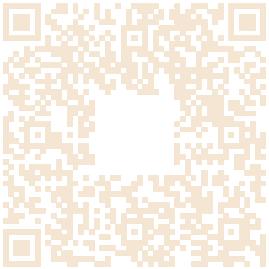



A key part of Kuwaisiana’s appeal lies in their embrace of cultural references in fresh, contemporary ways. “Whether it’s referencing Kuwait’s rough urban landscape or translating Kuwaiti film dialogues into rock anthems, we’re rethinking the Khaleeji aesthetic,” +Aziz explains. Chub, a fan favorite, uses the saying “ ” and weaves it with punk, while Lost Empire takes a children’s folk tune into unexpected territories, layering it with lyrics about climate change.
At its heart, Kuwaisiana is about opening doors. “I want listeners to experience Arab culture openly. Both Americans and Kuwaitis value civic engagement, so for me, ‘pop’ means using your voice in a unique, impactful way,” says +Aziz. As the band releases new music, they continue to push boundaries, inviting people from all backgrounds to join them on this cultural journey.
The release of the band’s “Gentrification” album marks a pivotal moment for Kuwaisiana, ushering in a bold new chapter in their musical journey. Now available on all major streaming platforms, the track invites
listeners into its powerful narrative, with an upcoming music video set to visually amplify its themes.
Kuwaisiana’s story is a testament to the power of music to bridge worlds. If you’re looking for something fresh that speaks to both heritage and modernity, this trio’s music is a must-listen. Discover their latest releases, including “Status Quo”, and follow their journey on Instagram @Kuwaisiana for updates, insights, and behind-thescenes moments.

Flexible check in and check out
Room with full breakfast buffet
25% discount in all outlets
Friday Brunch for two.
Kids activities available
By bazaar Staff
The Promenade Culture Centre (PCC) has become a vibrant hub for community development, hosting Circle Talks as part of its mission to provide a safe and supportive space for personal growth. The Circle Talks series, a key element of PCC’s Community Program, offers the general public a chance to participate in meaningful discussions on a wide range of topics in a small-group setting.
“Our Community Program is designed to offer people the opportunity to develop their skills in a supportive environment,” explains Ksenia Graovac, PCC Manager. “Circle Talks stands out because it brings the community together through conversations that inspire personal and collective growth.”
Held once a month in PCC’s main hall, Circle Talks covers a broad spectrum of topics, including practical social skills, arts and culture, mental and physical health, and environmental sustainability. These discussions, lectures, and workshops are led by a diverse range of facilitators, from artists and doctors to life coaches, each bringing their unique perspective to the table.
The emphasis on creating an open, welcoming atmosphere is what sets Circle Talks apart. “We realized that while our centre is a popular spot for cultural activities, young people and families also needed a space to grow together,” Ksenia tells us. “Circle Talks was created to fulfill that need by providing an intimate environment where participants can engage and share.”
The program’s adaptability is one of its strengths. “As we receive feedback, we adjust and expand the topics we cover,” Ksenia adds. By incorporating themes that are timely and relevant to the community, Circle Talks continues to foster a sense of empowerment and connection.
A memorable moment from a recent Circle Talk perfectly captures the program’s impact. Participants were invited to introduce themselves by sharing what brings them joy, and a frequent attendee remarked, “The thing that makes me happy is seeing a new Circle Talks session announcement in my Instagram feed.”
These small yet powerful moments demonstrate how Circle Talks positively influences the community. Facilitators are chosen for their ability to engage participants meaningfully, with topics that resonate on a personal level. “Our


session on self-compassion with Dr. Ayesha Kamal, for example, sparked a deep and ongoing conversation,” explains Farah Omrani, PCC Program Coordinator.
As the program evolves, the Promenade Culture Centre team is committed to staying in tune with the community’s interests. “We’re planning future sessions on topics like digital well-being and innovative sustainability practices,” the organizer shares. The goal is to continue building a platform where all members of the community can learn and grow.
For newcomers, the Circle Talks experience promises to be a welcoming one. “Participants can expect to feel comfortable, whether they are learning something new or discussing a familiar topic,” Farah shares.
With local artists, experts, and community members encouraged to get involved by proposing topics or co-facilitating sessions, Circle Talks fosters a true sense of community. As part of Promenade Culture Centre’s broader mission, this program is not only about learning but also about building connections that inspire personal development.

If you’re looking for a space to grow and connect with like-minded individuals, Circle Talks is the perfect opportunity. Stay updated on upcoming sessions by following PCC on social media—this is one community event you won’t want to miss! Follow Promenade Culture Centre on Instagram @pcckuwait. Join the conversation and take part in your community’s growth!
By Megan Dalla-Camina
From a young age, women can find themselves inundated with implicit and explicit messages about success. These messages often prescribe achieving the right type and level of accomplishment in their careers, conforming to traditional gender or cultural roles, or meeting the latest definition of impossible and unachievable beauty standards.
Women must navigate an intricate interplay of social expectations, external pressures and internal aspirations that shape their definitions and perceptions of success. They receive mixed messages that form a complex and sometimes convoluted narrative about what success should look like for women. And the patriarchy has played a significant role in shaping this narrative and the effect it has on women’s lives and careers.
The media, advertising, and pop culture (and in recent years, social media and reality television shows, such as The Kardashians) idealize images of what a ‘successful woman’ looks like and the typically impossible, unreal standards that women can never live up to. This constructed version of womanhood overemphasises physical beauty, material wealth and professional power and status. It perpetuates the notion of success as something ‘out there’, something that is both visible and measurable by others. While earlier generations of women faced their own challenges, modern women grapple with intensified external pressures, amplified by constant visibility and transparency brought about by the digital age.
Over time, these collective expectations can tangle and blur women’s own perceptions of both inner and outer success. The belief that success requires them to fit into pre-existing gendered molds is ingrained in women, limiting their ability to define success on their own terms. This pressure creates a cacophony of conflicting voices that women must deal with as they try and work out what it is that they really want.
The Success Paradox for women involves the tension between traditional markers of success, such as ambitious career goals and leadership roles, and the simultaneous quest for a deep sense of personal identity, authenticity and fulfillment. It acknowledges that, as women pursue their careers, they may grapple with questions about their true selves, values and the multifaceted dimensions of success. It shows up as questions of identity versus achievement; authenticity versus ambition; personal fulfillment versus external validation; and working out just where our wellbeing fits in amongst all of the doing it takes to succeed.
The Success Paradox is not a recent concept. It’s been deeply rooted through historical and social contexts that have shaped women’s roles and expectations. Across generations, women have been bound by gendered norms that have not only

limited their career aspirations, but have created a persistent and nagging inner conflict. The inner turmoil stems from needing to reconcile ambitions with deeply ingrained gender expectations. And for many women, this journey is further complicated by the tug-of-war between cultural norms and personal desires.
Navigating the complexities of knowing what they truly want for themselves and defining success in a world that persistently tells women who they should be is a fraught journey. Even as women rise to positions of power and influence, the questions of “Who am I, really?” and “What’s the purpose of it all?” linger in the air.
It’s a path filled with contradictions, external pressures and internal struggles, where women constantly grapple with the challenging task of being true to themselves, while at every turn they are being told who they should become and how they should behave. It’s much harder than most people think, certainly harder than women make it seem as they are so used to wearing an ‘I’m fine’ mask.
The process of redefining success can liberate women from the constraints society has imposed on them as they pursue their own goals and dreams. But it can also lead to self-doubt, societal backlash and the undervaluing of their accomplishments.
When women start to define success outside traditional metrics—like valuing work-life balance, prioritizing their personal wellbeing or making a social impact—they can face judgement or devaluation of their achievements. This resistance is often rooted in society’s difficulty in accepting any non-traditional success measures, particularly when they are displayed by women.
Internally, women can experience tension between the societal expectations of success and their own personal definitions, particularly when they are in the early stages of gaining clarity on what they are. They might question the legitimacy of their evolving desires, and struggle to self-validate, particularly if their personal definitions diverge significantly from what society’s norms are.
Defining authentic success
Without enormous internal effort, the external noise and social pressure can make it almost impossible for women to discern their own desires and aspirations. Are they striving for goals because it’s what they truly want? Does their path to success align with their inner values and purpose? Or are they pursuing a path lined with ‘shoulds’ and goals that they have been conditioned to want—by their family, their culture, the patriarchy in general?
So often women are driving and striving in their professional lives when they don’t even know what



it’s all for. They are so busy climbing the corporate ladder that they don’t even know if it’s leaning against the right wall. What is it all for? What’s the end game? What am I working so damn hard for?
The inner conflict is very real, but so often women can’t articulate that. They aren’t typically sitting around asking the big questions like, “Am I being true to my authentic self?” Instead, they are grappling with a sense of discontent, restlessness, and internal angst for why they feel disenfranchised at work and burdened at home, even if they won’t admit it to themselves.
I find that when women start asking questions about what they truly want, who they are now versus younger versions of themselves, and what success might look like if they were to be really honest about defining it for themselves, they get a little edgy. Emotions that they may not have felt for years rise to the surface, and it gets very uncomfortable. I know this to be true because over the past three years I have seen thousands of women come to live group coaching calls as part of the programs I teach and share with great vulnerability their very real discomfort when looking at these questions about their lives, their careers, who they are at their core and what they really want.
Here’s the hard truth: Success for women rarely looks or feels like what we think it will. And a big part of that is because of the patriarchal conditioning that has sold us a bill of goods that we never wanted,
that didn’t fit who we are or wanted to become, or meant that we would have to fundamentally change who we are to fit that model of success.
As more and more women are waking up to the social constructs that have engineered their lives, they are saying, “No, thank you. You can put that back in the box that it came in.”
Women need to define success for themselves— for who they are today and their visions of where they want to be. For some, authentic success may involve achieving the highest levels of leadership in their company and striving for meaningful external validation. For others, it could be finding that elusive balance between a purposeful career and a fulfilling personal life. For others, it could be contributing to causes that matter, or having a rich and vibrant creative life, or prioritising motherhood, or their relationships. Success might mean self-acceptance and following a path of inner contentment.
A woman’s journey is her own to explore, success is her own to define, and her life is to be lived on her own terms—even if that is an everchallenging reality to pursue.
The Success Paradox can weigh heavily on women. It can give rise to imposter syndrome, where women doubt their abilities and feel like they don’t deserve their achievements. It can lead to burnout as they strive to meet external demands
and expectations while sacrificing their wellbeing. It can breed dissatisfaction as women grapple with the relentless pressure to conform to externally prescribed definitions of success.
Part of the Success Paradox for women is to understand the true cost of living a life that is not of her own making, and driving for a version of success that she has not crafted for herself. It’s about forging a path where achievements are aligned with authenticity, and success is redefined on her own terms. It’s an invitation to reshape the gendered narrative of women’s success, to liberate it from the constraints of conformity and external validation.
It’s learning to resist the external narrative and listen to her own inner voice. This is harder that it sounds; in fact, for most women, it can feel excruciating. It involves questioning societal norms and rejecting the notion that success must conform to predefined templates.
The journey to defining authentic success is not linear. In a world that constantly tells women who to be, reclaiming the power to define success for herself is an act of radical empowerment. And it’s one that transcends societal and patriarchal constraints when each woman owns their own path.


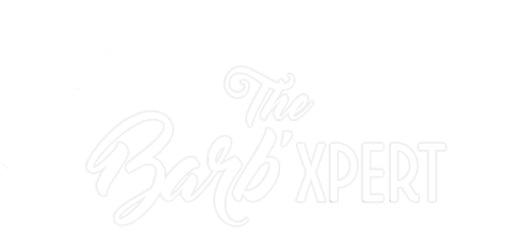

Styling and grooming play a crucial role in a man’s overall personality and self-confidence.
In today’s fast-paced world, personal appearance speaks volumes, often serving as the first impression in both personal and professional settings.






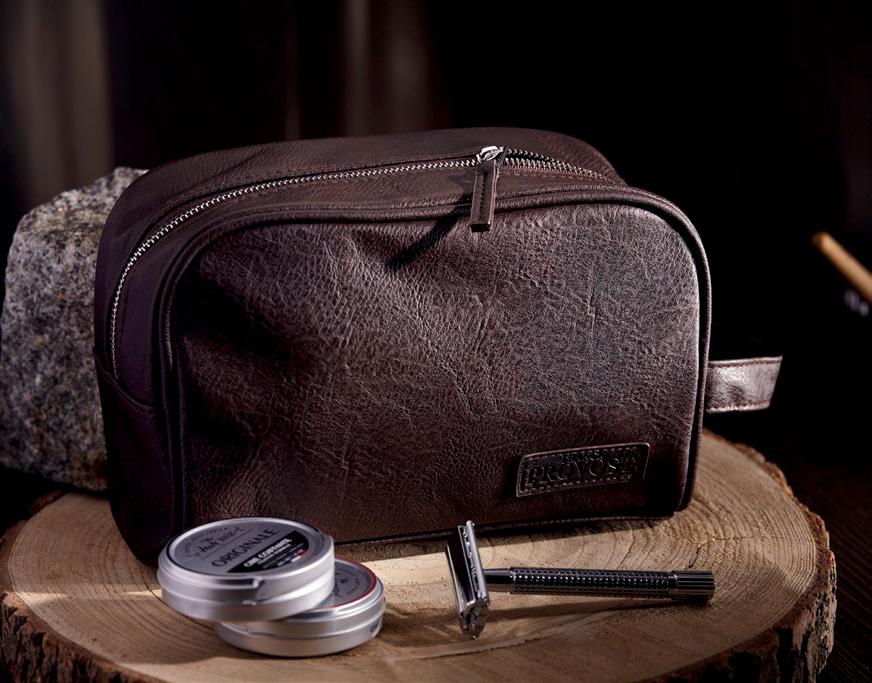


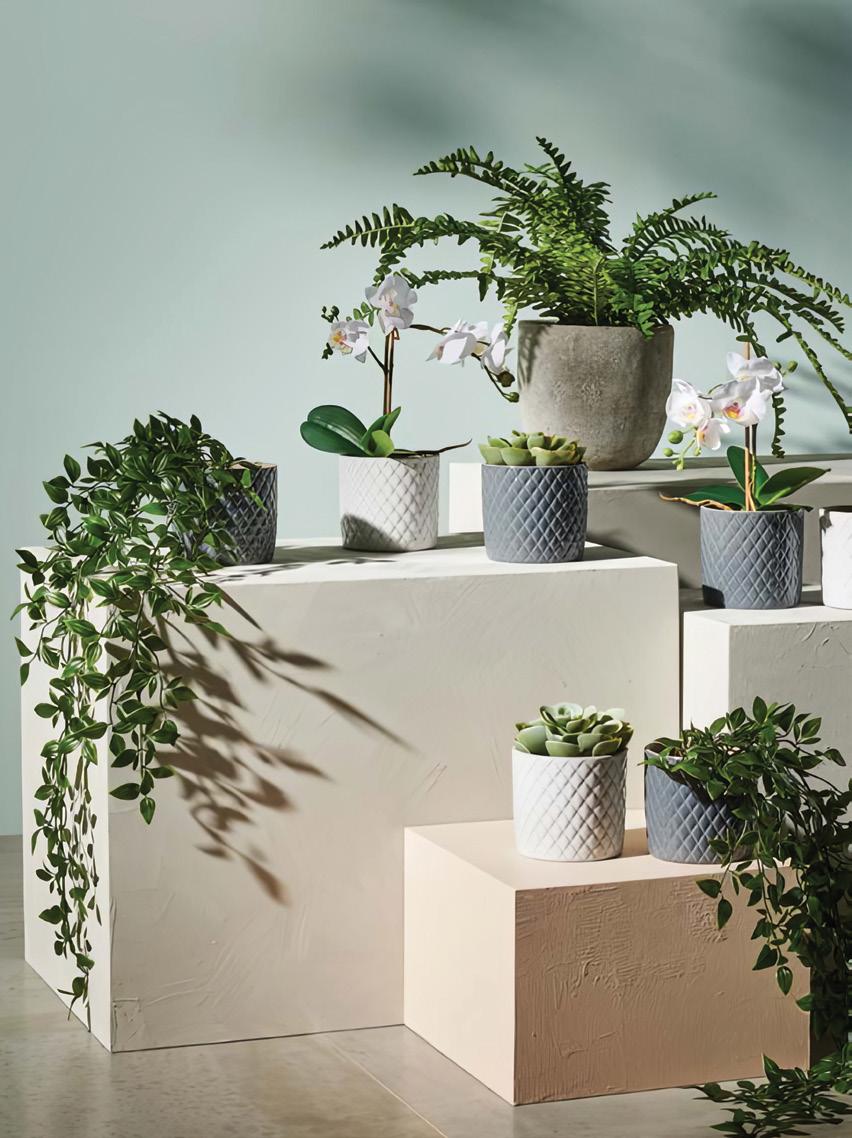


From Cozy Lounges to Stylish Dining Areas: Transform any outdoor space with the ultimate How-to guide from IKEA
Creating a welcoming and functional outdoor space can transform your home into a sanctuary, no matter its size. Design an inviting outdoor area that’s perfect for gathering with your loved ones! Whether it’s sharing laughs over snacks, hosting cozy evenings, or enjoying sunny brunches your outdoor oasis is within reach. With a touch of imagination and a range of versatile outdoor furniture from IKEA, your space can become a hub for dining, lounging, cooking, or storage. Let’s explore how to bring your outdoor vision to life. Creating your dream outdoor area is easier than you think.


SEGERÖN Coffee table, outdoor, white/beige, 73x73 cm KD 29
Start by sketching a floor plan to get a sense of what fits, then use these handy hints:
If you only use your space occasionally or want a low-maintenance setup, opt for lightweight, stackable, or foldable furniture. These pieces are easy to bring indoors and store, and you can protect them with waterproof covers if storage space is limited.
Plants and flowers add a touch of nature to any setting. If weather conditions or a lack of green thumbs pose a challenge, consider using artificial plants that deliver the same aesthetic appeal.
Good lighting lets you enjoy your outdoor area long after the sun sets. It creates ambiance and looks inviting, even from inside your home.

REVSKÄR 3-seat conversation set, outdoor anthracite/Frösön/Duvholmen dark grey KD 186.850
Cushions are a simple way to showcase your style. Mix and match colors, sizes, and patterns on sofas and chairs for a personalized, decorative touch. Remember to store them in waterproof bags or boxes when not in use.
Extend your indoor aesthetic to your outdoor space for a seamless visual connection.
Select materials based on your preferences and lifestyle. Wood offers natural warmth but needs maintenance every now and then, while plastic, steel, and aluminum are easy-care options. Protect your furniture from excess sun and moisture to help it last longer.
Imagine bringing the comfort of your living room
outdoors, whether it’s on a balcony, backyard, or beach. IKEA modular sofas and other seating options allow you to create the perfect spot to unwind and recharge.
Choose from a variety of seating styles, including sun loungers, armchairs, and garden sofas. Opt for maintenance-free materials for convenience or the natural appeal of wood if you don’t mind some extra care every now and then.
Just as new indoor flooring can change the feel of a room, outdoor rugs and floor decking can instantly upgrade your patio, balcony, or backyard. Choose from a variety of sizes, colors, and patterns to define specific areas for dining or lounging. Upgrade your terrace or balcony with boards that are easy to lay and take apart. They come in a variety of colors and materials, ensuring you find the perfect match for your outdoor style.


Cabinet in/outdoor, beige, 80x81 cm KD 29 SEGERÖN Sun lounger, outdoor white/beige/Frösön Duvholmen beige KD 88
Maximize Your Outdoor Space with Storage
Keep your outdoor area tidy and enjoyable by adding smart storage and organizing solutions to hold anything from cushions and dishes to toys and sports equipment. Little additions like hooks or a box can have as much of an impact as larger shelving units, cabinets, storage benches and trolleys. Open shelving makes items easily accessible, while closed cabinets and storage bags protect your belongings from the weather. Proper storage lets you spend more time enjoying your outdoor area.
Kids can also enjoy the outdoors with furniture designed just for them. Smaller, child-sized furniture is comfortable, durable, safe and easy to clean. Plus, they are lightweight, making them easy to move around as needed.
What’s better than cooking and dining outside in the fresh air? Whether you’re grilling vegetables, fish, or even pineapple, your outdoor kitchen can be the centerpiece of your gatherings. With the right barbecue, trolleys, and kitchen islands, you can keep oils, herbs, dishes, and bowls within easy reach, making for a seamless cooking experience.
Get your outdoor kitchen set up with the perfect grill, fire it up, and invite your loved ones for a casual gathering. There’s no need to worry about perfection; sometimes, the charm lies in slightly charred hot

RESÖ Children’s picnic table, light brown stained KD 19

dogs and good company. Enjoy barbecues wherever you go with lightweight, portable grills that are easy to take to the beach, park, or on a camping trip.
Accessories that Complete Your Space
You’re almost there! Make sure you add accessories that make your outdoor area truly yours. From plants and cushions to rugs and decorative items, the right accessories bring everything together, ensuring you’re ready for outdoor fun with family and friends.
Winter is the perfect time to embrace the outdoors, and your outdoor space can become the heart of your home. With the right combination of furniture, accessories, and a little creativity, you can create a space that’s functional, stylish, and uniquely yours. Whether it’s grilling with friends, lounging under the sun, or creating a play area for the kids, your outdoor area has endless possibilities.
Your perfect outdoor space is just an IKEA visit away. Shop at IKEA the Avenues, IKEA the Warehouse (Sabahiya), IKEA 360, IKEA Assima, IKEA Khiran or online at www.IKEA.com.kw. For more information, please call 184 0408 or follow @IKEAKuwait on Instagram.
Looking for more inspiration and ideas? The IKEA brochure is a treasure trove of insights! Scan the QR code to get the brochure.


By bazaar Staff
The Waldorf Astoria Spa in Kuwait is a luxurious wellness haven designed to restore a healthy balance of mind, body, and soul. Proudly located on the second floor of the prestigious hotel, this spa has been honored with the Forbes Travel Guide Five-Star award, positioning it among the world’s top-rated spas.

Spanning 13,560 sqm, the spa offers an elegant escape featuring eight treatment rooms, three Hammam spaces, two vitality pools, and lavish male and female spa areas. It also includes a VIP Treatment Suite for couples, delivering personalized, premium experiences that redefine luxury. Each treatment is carefully curated by expert therapists to ensure guests experience the utmost relaxation and rejuvenation.
The Waldorf Astoria Spa exclusively uses highquality products from luxury skincare brands such as AMRA and Tata Harper. Tata Harper, renowned for its natural, effective ingredients, is a unique feature at the spa, offering guests exclusive treatments that blend innovation with local ingredients to meet a variety of wellness and beauty needs.
NI Ketut Candra, the Director of Spa and Wellness, brings over 13 years of experience in the industry. She is dedicated to enhancing the luxury wellness experience at Waldorf Astoria Kuwait. Under her leadership, the spa has already achieved remarkable recognition, including the prestigious Forbes Five-Star Rating. Candra emphasizes, “Receiving the Forbes award for excellence in spa services in our first year was a defining moment. It affirmed our commitment to delivering unparalleled experiences to our guests, solidifying our position as a top-tier establishment in the global spa landscape.”

Candra’s tips for a healthier and happier life
Nurture Yourself: Maintain a balanced diet with regular, nutritious meals, and ensure adequate hydration. Foster positivity by choosing foods, rituals, and social connections that nourish your well-being.
Exercise: Engage in daily activities like walking, which can boost mood and overall health. Complement movement with mobility practices to enhance posture and well-being.
Practice Gratitude and Journaling: Take moments to reflect on gratitude daily, whether through journaling or mental exercises. This practice promotes a positive mindset and emotional well-being.
Prioritize Sleep: Maintain a consistent sleep schedule and reduce screen time before bed. Relaxation music is available to unwind and enhance the quality of your restorative sleep experience.
Exclusive Membership: A Gateway to Unparalleled Luxury
The hotel offers a membership package which grants you privileged access to an exclusive world of luxury and rejuvenation. Membership provides personalized treatments designed by expert therapists, serene settings, and access to toptier amenities. It offers a sanctuary where every
visit promises a retreat into tranquility, making your membership a key to refined wellness and relaxation.
One of the spa’s most sought-after treatments is the Pure Serenity Organic Indulgence, a 90-minute experience that combines the benefits of Tata Harper’s organic skincare. This package includes a 60-minute Tata Harper Facial, followed by a 30-minute tension-relief back massage, finishing with a calming session in a private wellness room. Priced at 99 KWD, it’s an experience designed to elevate your senses and promote deep relaxation.
The Waldorf Astoria Spa offers a multi-sensory journey into wellness and relaxation, setting the highest standards in service and care. From luxurious skincare treatments to exclusive wellness rituals, every element is designed to ensure guests leave feeling revitalized and balanced.
For more information about membership and reservations, please contact +965 2477 4444, email: reservations.kuwait@waldorfastoria.com, or visit kuwait.waldorfastoria.com. Follow @WaldorfAstoriaKuwait on Instagram for updates.
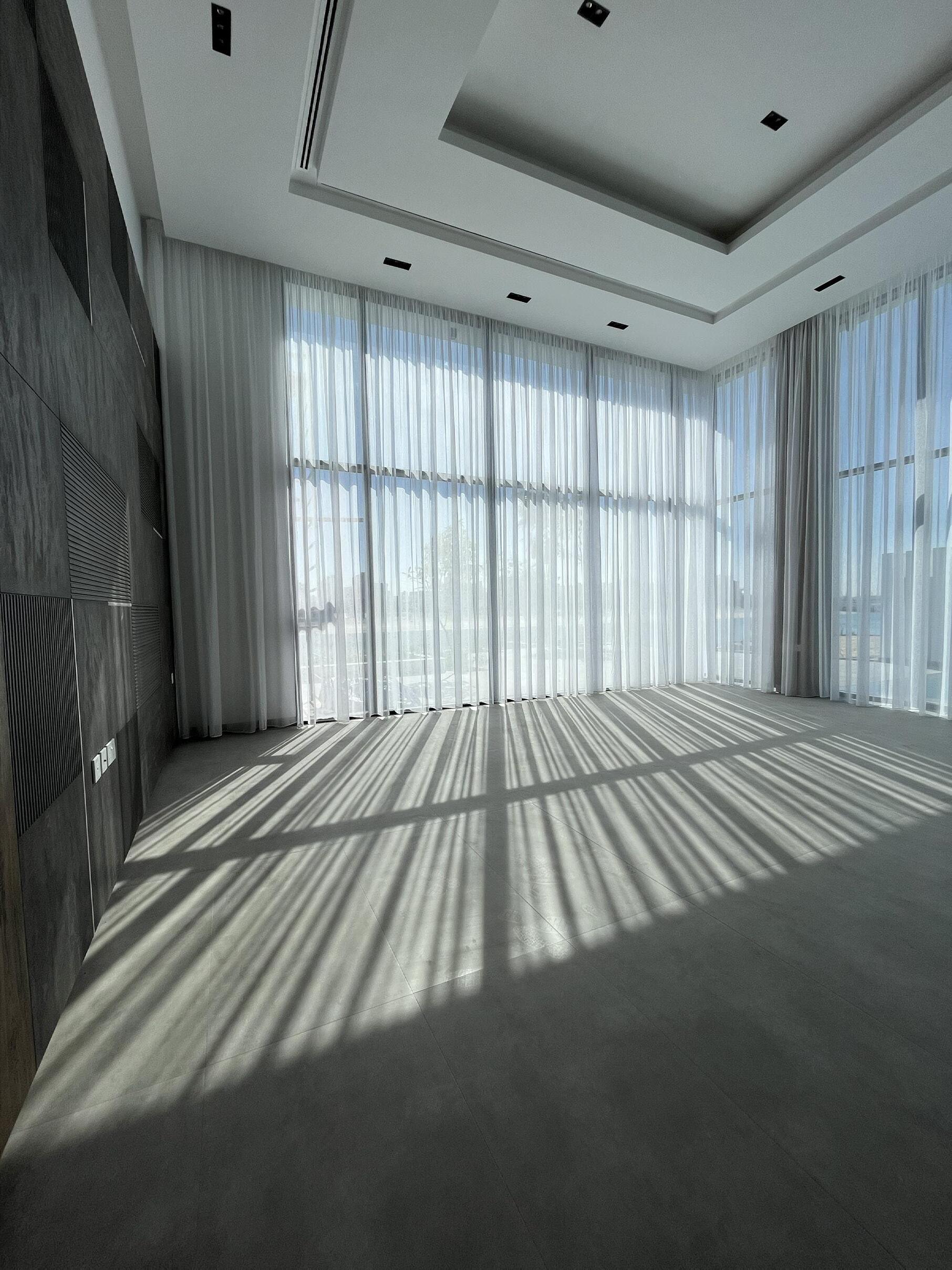


By bazaar Staff
The 911 GT3 has offered the ultimate combination of racing genes and day-to-day usability since its introduction in 1999. To mark its 25th anniversary, the new model will launch simultaneously in two versions for the first time: as a track-focused sports car with a rear wing and as a more understated version with a Touring package. With tailor-made packages and innovative options, the GT3 variants can be further customized to the customer’s taste and intended use.
The exceptionally track-ready road sports car makes its debut in its anniversary year with an expanded lightweight strategy, a naturally aspirated 4.0-litre boxer engine with 375 kW (510 PS) and 450 Nm, and new, highly customerfocused options.
The Weissach package, available for the first time in the 911 GT3, offers even more custom configuration options for use on the track. In addition, the sports car comes with more extensive standard equipment and other options that further enhance its precision and sportiness.
911 GT3 with modern styling
The new 911 GT3 models feature a sharpened design in the front and rear as well as adapted aerodynamics. In both variants, the re-contoured front diffuser, the refined shape of the spoiler lip and modified fins on the underbody increase downforce and optimize the air flow. Redesigned
Matrix LED headlights, available on the 911 GT3 with an optional white accent ring, combine all the light functions of the 911 and eliminate the need for additional lights in the front apron. This enables an enlarged air inlet area and a clearly structured look. In the rear, the diffuser, air inlets and rear lid have been redesigned. The rear wing of the 911 GT3 has new angled side plates.
Porsche uses specially developed, aerodynamically shaped trailing arms with a teardrop profile on the double-wishbone front axle. They increase downforce in the wheel arch at high speeds and improve brake cooling. To ensure that the downforce balance between the front and rear axles is maintained even when braking from high speeds, the suspension engineers have reduced pitching (anti-dive). On the new 911 GT3, the front ball joint of the lower trailing arm has been set lower on the front axle to facilitate this. The 911 GT3 has adopted these modifications from the current 911 GT3 RS. The 911 GT3 comes
standard with 255/35 ZR 20 (front) and 315/30 ZR 21 (rear) sports tires with improved wet grip; optionally, track tires with road approval are available.
Touring package available from launch and even more customizable
With the model change, Porsche is defining the variants of the 911 GT3 even more clearly. For the first time, the popular Touring package will be available right from the market launch. The ‘Touring Package’ designation goes back to an equipment variant of the 1973 911 Carrera RS 2.7. It has been part of the GT3 program since 2017. It’s even more distinctive in the new 911 GT3, as reflected in the ‘911 GT3 touring’ logo on the rear lid grille. The 911 GT3 with Touring package dispenses with the fixed wing and thus preserves the timelessly elegant line of the 911. An extendable rear spoiler with a tear-off edge, the famed Gurney flap, and an adapted fin design on

the underbody provide aerodynamic balance. The interior offers a high-quality leather interior and a classic sporty ambience. For the first time, a rear seat system for the 911 GT3 with Touring package is available as an option. This allows the everyday sports car to be adapted even more individually to the wishes of the customer for maximum driving pleasure on winding country roads.
“Particularly on winding country roads, you can clearly feel that the steering is even better tuned than its predecessor,” said Porsche brand ambassador Walter Röhrl.
“It instils even greater confidence in the car because it responds more calmly from the center position without losing any of its directness. The shorter gear ratio also significantly enhances driving pleasure on country roads.”
Lightweight design throughout Its low overall weight contributes to the agile and direct handling of the 911 GT3. The new 911 GT3 goes all-in on lightweight design. A new, silvercolored lightweight aluminum wheel reduces the unsprung masses by more than 1.5 kg compared to the previous model. Optionally, magnesium wheels are available with the Weissach package or the Leichtbau (lightweight) package. They save nine kilograms. A new 40 Ah lithium-ion lightweight
battery contributes to the athletic body mass index by shaving off another roughly four kilograms. In the lightest configuration, the new 911 GT3 weighs just 1,420 kilograms.
Eight percent shorter gear ratio
The 4.0-litre naturally aspirated engine in the new 911 GT3 has been designed for current, significantly stricter exhaust standards and equipped with two particulate filters and four catalytic converters. With this extremely powerful emission control system, Porsche also delivers a gripping soundscape. The engine power of the six-cylinder boxer engine was attained through a series of optimization measures.
Innovative lightweight sports bucket seat
For the new 911 GT3, a new lightweight sports bucket seat with a folding backrest and a seat shell made of CFRP is available as an option. The seat is equipped with an integrated thorax airbag, electric height adjustment and manual longitudinal adjustment; a three-stage seat heater is available as an option. A part of the headrest padding can be removed. This improves ergonomics for most drivers when wearing a helmet during circuit use. The folding function of the backrest, which is activated via a loop, enables access to the optional rear seat system offered for the first time in the
911 GT3 with Touring package. As an alternative, you can order the Adaptive Sports Seats Plus with electric 18-way adjustment.
Individual packages for 911 GT3 and 911 GT3 Touring Porsche offers various equipment packages for the new 911 GT3. With the Weissach package available for the first time, the 911 GT3 is even more individually configurable for use on circuits. The anti-roll bar, coupling rods and shear panel on the rear axle are made of CFRP as are the roof, sideplates of the rear wing, exterior mirror top shell, mirror triangle and the airblades in the front area. Additional leather and Race-Tex upholstery enhance the look of the interior. For the first time, the upper side of the dashboard on the 911 GT3 is accordingly covered in anti-glare Racetex. CFRP door handles and storage nets optimize the interior door panels for a lightweight design. A CFRP roll cage and magnesium lightweight forged wheels are available as options.
For the 911 GT3 with Touring package, Porsche offers the Leichtbau package. Here, the roof painted in the exterior color as well as the stabilizer, coupling rods and shear panel on the rear axle are made of CFRP. The lightweight magnesium forged wheels and the lightweight door panels are also part of the package. In conjunction with the standard


6-speed GT sports gearbox, the shortened gear lever from the 911 S/T is used. In front of the gear lever, a plaque with the inscription ‘Leichtbau’ indicates the package.
For the 911 GT3 with rear wing, the Clubsport package for track use is available at no extra charge. It includes a bolted steel roll cage in the rear, a 6-point harness for the driver and a hand-held fire extinguisher. The optional lightweight sports bucket seats are a prerequisite for this.
“The new 911 GT3 has become even more exhilarating and individual. We dug into a wealth of details and gave it many features that our customers wanted. This allows the GT3 to be adapted even more specifically to the purpose or
preferences of the driver,” said Andreas Preuninger, Head
Exclusive chronograph is a “sports car for the wrist”
Exclusively for owners of the 911 GT3 and the 911 GT3 Touring, Porsche Design presents an exceptional timepiece that translates the design and performance of the sports car to the wrist. The 911 GT3 chronograph and the 911 GT3 Touring chronograph are equipped with the precise, COSCcertified Porsche Design WERK 01.200 movement, which has a flyback function. The ultra-lightweight titanium case, optionally with black titanium carbide coating, combines sports car design with modern watchmaking. The GT3 design dial with
yellow accents and hexagonal structure evokes the vehicle’s instrument panel, while the winding rotor is based on the design of the GT3 rims. The dial ring is available in all exterior colors of the 911 GT3 and the Touring package, as well as in the colors of the Paint to Sample program. The band, crafted using original Porsche interior leather and thread, is also matched to the respective configuration of the vehicle.
The new Porsche 911 GT3 and the new Porsche 911 GT3 with Touring package can be ordered from the end of the year. For more information and the latest updates automotive excellence at a new level, follow @Porschecentrekuwait

By Steven L. Blue
Many leaders are perplexed when their people don’t do what they want. They usually blame it on the employee. But that is not always the case. When employees don’t do what you want, it comes down to one or more of these three things that you as the leader are doing wrong.
You are not being clear on what you actually want Leaders often think employees should intuitively know what they want. That is very seldom the case. Of course, that may be true in the day-to-day activities of a well-defined job description. But in a constantly changing world, your team needs to be flexible. They will often need to implement unusual or unique never-been-tried ideas.
So you need to lead your team in many different directions. You should not expect people to somehow know what those directions are. When your people don’t know what you want, it is always because you failed to communicate.
Remember the three Cs of critical communications: clear, concise, and compelling. Be very clear in communicating your expectations. Be concise. Now is the time to be very precise. Tell your people exactly what you want. Don’t speak in generalities. Then ask them to repeat it back to be sure they are clear. Finally, your message should be compelling enough to motivate them to action.
You aren’t permitting them to say, “I don’t know” Leaders also mistakenly assume people know how to do what they want, especially in a new situation. When they don’t know how to do what you want, they may be hesitant to admit it. Permit them to not know.
Always ask them if they know how to do it. Then listen very carefully to what they say. They probably won’t say “I don’t know” because they feel that admission would expose them to criticism. They will more likely say they do know even if they don’t. Ask probing, but not threatening, questions to discover areas they may be deficient in. Don’t leave the conversation until you are satisfied they’re clear and know how to do the assignment.
And speaking of not knowing, now is a good time to reskill your workforce. Whatever they know today, it won’t be good enough for tomorrow. The rapidly evolving world of generative AI will highly likely obsolete your workforce if you aren’t constantly reskilling them.
You don’t allow them to disagree Sometimes, people simply don’t want to do what you want. They usually won’t tell you that because that could be insubordination. They just nod their heads but then passively ignore what you asked of them. Or they execute the assignment in a halfhearted way guaranteed to fail. Often, they disagree with your request, but won’t

tell you that. In this case, if you know they disagree with it, you should ask them why—and then listen closely. They may have legitimate concerns about your request that deserve consideration. They may be right in their objections. In that case, you should reconsider and change direction.
They may not do what you want because they don’t like you. This is more common than you think. Should a leader be likable? No. Should a leader be respected? Absolutely. If your people don’t like or respect you, that is a big problem. And that problem is yours. Don’t blame them because you are a leader not deserving of respect. You need to work on that before you can expect people to follow you.
They may not do what you want because they want you to fail. This is more common than you might think. People sometimes want you to fail so they can get your job. People sometimes want you to fail just to make you look bad. People sometimes want you to fail so they don’t look bad. If that is the
case, you need to replace them. There is nothing else you can do about an employee who wants you to fail.
Sometimes, they fear they will look bad because you didn’t use their idea. Especially if your idea works and theirs doesn’t. Always be mindful of peer pressure. People always want to look good in front of their coworkers. If you aren’t going to use one of their ideas, don’t make a big deal out of it. Perhaps you could tell your team that the employee had a promising idea, but you just didn’t use it.
Never assume that your employees are allknowing. Many times, they are not. And most times, it is not their fault. It’s yours. Don’t just ignore the warning signs. Employees that “don’t do,” or “don’t know how to do” what you need can lead to all kinds of business problems, potentially even disasters.
by Chris Liverani on Unsplash.





By Scott Nover
In 2014, the story of Adnan Syed and Hae Min Lee gripped the world. But the crime in question happened 15 years earlier. Lee, a Baltimore-area high school student, was strangled to death in 1999. Her then-boyfriend, Adnan Syed, was arrested, charged with firstdegree murder, and sentenced to life in prison without the possibility of parole. But did Syed really do it? Was he locked up for a heinous murder or, as he claimed, falsely imprisoned for a crime he never committed?
That’s the central premise of the first season of Serial, the seminal true-crime podcast, which debuted 10 years ago. A team from This American Life—namely, host Sarah Koenig and producer Julie Snyder—had taken up the mantle of investigating the ins and out’s of the Lee murder, and walking their listeners through every thought, step, and conclusion as they worked in real time. It was a view into the mind of top radio journalists as they grappled with conflicting feelings, evidence, and personalities to try to do the tough work of sorting fact from fiction. In doing so, they inadvertently ushered in a new renaissance of the true crime genre.
“Serial was a game-changer for the true crime genre,” says Ashley Flowers, creator and co-host of the podcast Crime Junkie. “It was the first piece of work in the medium that achieved mainstream success without using a sensationalized or dramatized approach.”
Serial, it turned out, was more than a hit. It was a bona fide cultural phenomenon, a rare monocultural moment at a time when popular media was rapidly becoming disaggregated and individualized through social media and streaming algorithms. But its buoyant theme song and goofy Mailchimp (“Mail-kimp!”) advertisements became ubiquitous for a time—and so did water-cooler debate of whether or not Syed was guilty.
It was a whodunit for the 21st century. And a moment when the fates of the podcast medium and the true crime genre merged for good.
‘Podcasting has shown what the listener wants’ When Serial debuted on October 3, 2014, only 30% of Americans had ever listened to a podcast, according to Edison Research. By 2024, that number more than doubled to 67%—or 192 million people. These days, 98 million Americans listen to podcasts every week.
That’s not to say Serial created the genre of true crime. Television shows like Dateline and 48 Hours had long cultivated devoted viewerships— especially among female audiences. But Serial’s, well, serialized nature, also brought a degree of narrative tension to the format that had largely been missing from documentary-style true crime.
Gabriel Soto, the senior research director at Edison Research, says that podcasts allow journalists to “deep-dive and borderline obsess” over a case or topic, especially in contrast with

primetime television, in which producers have to squeeze a lot of information into a fixed onehour or two-hour special. “Podcasting has shown what the listener wants. They want facts, they want transparent reporting and as many details as possible,” he says. “Podcasting ushered in this more detailed, even more victim-centered coverage of crime cases and topics that you can’t get anywhere else.”
But contrary to some misplaced credit, it wasn’t the catalyst for the success of all podcasts since, says Lindsey Sherrill, a business communication professor at the University of North Alabama and scholar of true crime. Rather, it was merely a great show that debuted at the right moment in media history. Podcasting, she says, was “growing but not necessarily super mainstream.”
Serial came right before many major updates to the iPhone and Android podcast apps, so the biggest spikes in overall podcast listenership actually came a year or two after it aired, says Sherrill. But some of those changes were also happening in the car with Bluetooth becoming readily available in vehicles before Serial debuted.
“That probably had a huge amount to do with the podcast growth at that time.”
‘Koenig let herself be part of the story’
For Ashley Flowers, Serial was where it all began. It was the first podcast she ever listened to and inspired her in more ways than one. Sarah Koenig and Dana Chivvis brought the story to life, Flowers says, making it feel like she was along for the ride. “It made me realize that there was space to tell stories that could shine a light on the lesserknown cases and victims who might not otherwise have a voice,” Flowers says. “And if done right, there could be real-world outcomes to investigating these stories.”
Serial was a return to a simpler time in media, a tune-in-next-week ode to radio shows of the past. But it also opened the floodgates for a deluge of true crime media, a hyperfixation on the unsolved, too-hastily-solved, and eeriest cases in society. It was a Pandora’s box moment for true crime— before the genre still felt novel and fresh living in our smartphones, before it was ubiquitous.
Photo by Kelly Sikkema on Unsplash.


By bazaar Staff

Sadly, diabetes is highly prevalent in Kuwait, with studies indicating that the country has one of the highest rates of diabetes in the world, affecting over 15% of the adult population due to factors such as lifestyle, diet, and genetic predisposition. Managing the disease can be a complex and challenging journey, but having the right guidance makes all the difference. In this conversation with Dr. Thamer Alessa, we explore essential insights into diabetes care, including understanding the condition, managing blood sugar levels, medication options, lifestyle changes, and tips for long-term health. Whether you are newly diagnosed or have been living with diabetes for years, this discussion offers valuable information to help you take control of your health and navigate your diabetes journey with confidence.
Dr. Thamer Alessa is a consultant physician in the field Diabetes and Endocrinology which deals with diabetes disease and the disorders of the hormonal system. “What attracted me towards my current specialty is the mechanism of body hormones. They are fascinating in their actions. We have many hormones in our bodies, produced for multiple organs we call them glands. Those
hormones have actions on multiple organs and can control multiple body functions and parameters including blood pressure, body weight, metabolism and glucose as well which is main culprit in the disease of diabetes,” he explains.
Diabetes means that the body cannot utilize glucose, what medical professionals call sugar, as fuel for cells. This causes elevated glucose levels
in the blood and if not treated will cause multiple symptoms and complications.
Diabetes can be divided into four major types. Type 1 diabetes occurs in children and teenagers and is caused by a lack of insulin production from the pancreas where insulin is naturally produced. Unfortunately, this is still an incurable condition and can only be controlled by the use of insulin for life.
Type 2 diabetes typically occurs in adults and is characterized by elevated blood sugar levels. Unlike Type 1 diabetes, people with Type 2 diabetes often have normal or even higher levels of insulin production, though insulin levels may decrease over time. The condition develops primarily due to insulin resistance, where the body’s cells do not respond effectively to insulin, preventing proper blood sugar regulation. This resistance is commonly linked to factors such as obesity, excessive carbohydrate intake, and lack of physical activity. Genetics also play a significant role in the development of Type 2 diabetes. Fortunately, lifestyle changes like a balanced diet, regular exercise, and weight loss can improve this condition. There are also various treatment options available, including oral medications and injectable therapies. Type 2 diabetes is the most prevalent form of diabetes worldwide.
There is also gestational diabetes, which only occurs during pregnancy due to excess pregnancy hormones that also work to increase insulin resistance and elevate the blood sugar until end of pregnancy. Fortunately, treatment as well is temporary, whether by diet, pills or even insulin. There are also some rare genetic types of diabetes which are uncommon or even rare to happen.
Despite the prevalence of the disease, there are still many misconceptions around it. Many people continue to believe that Type1 is a temporary condition or that using insulin could be harmful. Insulin therapy is the only effective treatment for managing Type 1 diabetes. For various types of diabetes, there is a common belief that changing one’s diet, using herbs, or consuming other natural products can treat or even cure the condition entirely. However, diabetes is a complex medical disorder that requires specific treatments designed to target its underlying mechanisms and improve blood sugar control. Unfortunately, many people turn to unproven and untested remedies, often based on recommendations found on social media or websites. Some even stop their prescribed medical treatments in favor of these alternatives, which can be dangerous. “I have seen many patients with worsening diabetes condition just because they stopped their treatment and wanted to experiment other options,” Dr. Thamer explains.
Adopting a healthier lifestyle can improve Type 2 diabetes and lower the risk of developing it. Maintaining a normal body weight helps prevent insulin resistance, which is a key factor in both elevated blood sugar and diabetes. Regular exercise boosts metabolism, burns stored fat, and can have benefits comparable to diabetes medications. It is recommended to do moderateintensity exercise, such as running, cycling, or swimming, for at least 150 minutes per week, spread over 5 days. Strength training twice a week for about 20 minutes is also beneficial for building
muscle, improving endurance, and enhancing the body’s ability to exercise.
Diet is another critical factor. Limiting highcarbohydrate and high-fat foods like pastries, rice, bread, potatoes, and sweets, while consuming more lean protein, complex carbohydrates, fresh vegetables, beans, and low-fat dairy, can help reduce insulin resistance.
Ultimately, a balanced diet combined with regular exercise can lead to weight loss, which is particularly beneficial for those who are overweight or obese. Losing just 5-10% of body weight can significantly improve glucose control, and maintaining this weight loss is crucial for managing diabetes effectively.
Diabetes is a chronic medical condition and in many instances has no cure and can only be managed. Though treatments of diabetes are very effective, they require a significant commitment from the patient. Taking many medications and even injections can be disturbing to some people and creates anxiety and depression. Having continuous glucose monitoring for some patients can be a significant burden, especially as it includes pricking the fingers and going through many high and low sugar levels.
“Giving the attention needed to treat diabetes is not always easy for patients and many skip important steps in the management of their disease just because they feel lazy and indifferent toward it. Those people require continuous support and encouragement and require the attention of physicians and family and friends,” Dr. Thamer continues.
Fortunately, modern diabetes treatments and technologies have greatly advanced, offering improved options for patients. Drug therapies now help manage blood sugar, aid in weight loss, and improve heart, blood vessel, and kidney health. Insulin therapy has also evolved to be less frequent and safer, with a reduced risk of low blood sugar.
For Type 1 diabetes, insulin pumps offer continuous insulin delivery, eliminating the need for multiple daily injections. These pumps have become smarter, using advanced technology to calculate insulin needs with less patient input. Future models are expected to incorporate artificial intelligence for even easier management, seamlessly integrating with glucose monitoring devices.
Additionally, continuous glucose monitors (CGMs) can now be worn as small stickers on the skin, providing real-time blood sugar readings. This allows patients to better manage their glucose levels with minimal discomfort.
Social and family support is crucial for managing diabetes, especially when it comes to adopting a healthier lifestyle. Encouragement from loved ones can greatly impact a person’s ability to make and maintain these changes.
Education about diabetes is also essential for
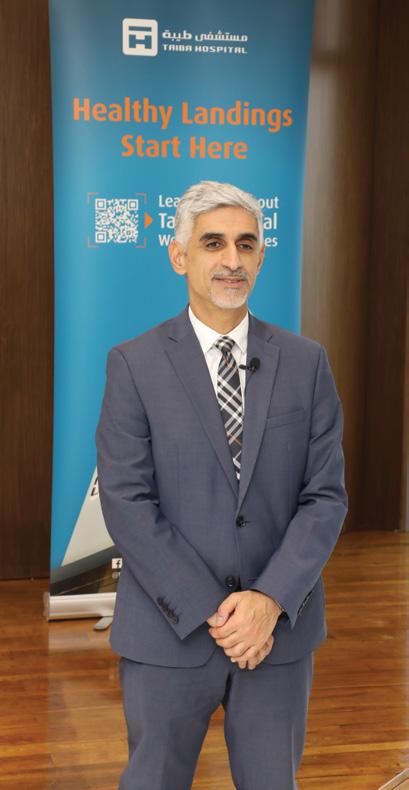
effective sugar control. Knowing which foods can raise blood sugar is important, particularly when dining out or attending social events, to help make better food choices. For those using insulin, it’s important to take injections as prescribed, even in social settings, without delay. Building confidence in managing diabetes in various situations is a key part of effective care.
“It is important to emphasize that getting diabetes under control very early on, would help to prevent important diabetes complications like kidney and heart diseases,” Dr. Thamer asserts.
Fortunately, Dr. Thamer has seen lots of success stories of people who have successfully managed the disease. “I have many patients who were diagnosed with Type 2 diabetes and obesity with poor diet plan which prevented adequate glucose control. Those patients when enrolled in a weight loss program with diet and exercise, using lifestyle advice or obesity medical treatment or even obesity surgery, reached the remission phase which means that the blood sugar is normal with no diabetes treatment being used. This is the ultimate goal for patients with Type 2 diabetes,” Dr. Thamer says.
While a diabetes diagnosis is scary, that doesn’t mean you can’t get better. Take control of your lifestyle and work with your healthcare team and you too, can live better for longer.
Taiba Hospital is located in Sabah Al Salem, off of route 30 on Road 3. Call them 24 hours at 180 80 88. For updates and information, visit the website taibahospital.com, and follow them on Instagram @taibahospital.
By Aytekin Tank
In psychology, compartmentalizing is a defense mechanism people use to avoid cognitive dissonance—the uncomfortable feeling of conflicting thoughts, emotions, or experiences. For example, if you just went through a bad breakup, you might listen to love songs and cry over a pint of Haagen Dazs at home. At work, however, you put on a brave face and carry on as usual. Compartmentalizing can help us navigate divergent dynamics and emotional charges in the various contexts of life.
For entrepreneurs, compartmentalizing can be a useful strategy for managing the demands and stresses of leading a company. Take it from Susan Rice, former US National Security Advisor and UN Ambassador. Rice explained that compartmentalizing enabled her to work on some of the world’s most pressing crises without becoming debilitated. “It didn’t cripple my ability to focus and do the job functionally,” said in a speech.
Identify and prioritize your most important tasks
The first step to compartmentalize your work life is to identify your most important tasks. Rather than chase the dopamine hit of ticking off another inconsequential item on your to-do list, spell out your biggest priority each day. Write your most important task of the day on a sticky note (or digital sticky note). Post it where you’ll see it while you work, and let it be a constant reminder to block out the endless distractions clamoring for your attention throughout the day.
Adam Bryant recommends workers keep a strategy document which maps out why a given task is important. Start by answering the following questions:
• What is the goal, the core message, in one line?
• What are the three key actions that are needed to achieve that goal?
• What are the three key challenges you will have to overcome to achieve that goal?
• And how do you measure success in twelve months (or whatever time period you choose)?
• As you compartmentalize your workday, keep your priority and strategy in the forefront of your mind.
Batch your work
In a world where everyone seems busy all the time, you have to wonder what makes some people achieve exceptional levels of productivity. Wharton management professor and author Adam Grant is a prime example of extraordinary productivity. Grant shared his method with fellow author Cal Newport, who described it in his book Deep Work. Grant batches his work on multiple levels. He organizes his schedule on a macro level, stacking his teaching in the fall and research in the spring and summer. On a micro level, he batches his weekly and daily work by alternating between open-door time and periods when he dedicates himself to focused deep work.
Fiercely protect your time for uninterrupted, deepfocus work
“Though Grant’s productivity depends on many factors, there’s one idea in particular that seems

central to his method: the batching of hard but important intellectual work into long, uninterrupted stretches,” writes Newport. This approach underlines the importance of not just organizing tasks by type but also ensuring you dedicate uninterrupted time blocks to tackle your most important work.
Block out time for meaningful, high-impact tasks on your calendar and fiercely defend those periods against distractions and interruptions. Grant takes this idea to new levels by setting up an “out of office” auto-reply—even when he’s physically in the office. This strategy signals to colleagues that he’s engaged in focused work and shouldn’t be disturbed.
Map
It is also essential to map out exactly what each task entails. Most tasks are, in fact, workflows—series of interconnected steps that lead to a specific result. Some workflows are linear. Consider brushing your teeth. You grab your toothbrush, apply toothpaste, add water, brush, rinse, and repeat. But oftentimes, tasks involve various dependencies, like input from colleagues or changing outcomes that can redirect the course of your workflow.
Often, we fail to fully understand our workflows and how much time each task requires. When the elements of a task are scattered throughout the day, compartmentalizing becomes challenging. Carving out time for uninterrupted work becomes impossible.
Schedule stress and worry time You can’t just tell an anxious entrepreneur not to stress.
Stress can be inherent to running a business. Sometimes it’s a positive force, fueling us with momentum that leads to innovation. Other times, it can be consuming and distract us from necessary, critical work.
When the stresses of work, or even life outside of work, become overwhelming, I practice the same technique I use for almost everything else in my life: I add it to my calendar. Setting aside worry time is an effective way to give yourself time to feel whatever you’re going through—without letting it consume you. You can also use that half-hour or so to identify the true source of your anxiety and come up with some proactive steps to manage it. This can prevent the human tendency to dwell and ruminate. Instead, we package up that rumination period in a neat time box and prevent it from destroying our focus throughout the day.
By scheduling dedicated worry time, you can maintain control of your focus and energy, even in the face of inevitable stress.


By Brian Berner
Currently, the volume of information often eclipses its value. Is our relentless pursuit of knowledge, in fact, counterproductive? Decision paralysis, cognitive overload, and a pervasive sense of being perpetually behind are just a few of the consequences. And numerous solutions have been proposed to address this recurring challenge. I propose another: selective ignorance. This is not meant to be a retreat from knowledge but a strategic imperative, a conscious effort to reclaim control over our attention and prioritize what truly matters.
Not all information is created equal and not every task is equally essential. Rather than attempting to absorb every piece of information, filter out the distractions and focus only on what’s important.
Selective ignorance offers a discerning lens through which leaders can home in on what truly matters. This frees up valuable mental bandwidth, enabling leaders to channel their cognitive resources toward the most critical tasks and strategic initiatives. Instead of drowning in a sea of data, leaders who become skilled at selective ignorance can drive results by navigating the complexities of the modern business landscape with clarity and purpose.
Selective ignorance is not synonymous with unintelligence or an incapability to learn. Instead, it’s about consciously choosing to remain uninformed about vast swathes of information, subjects, and skills. The most successful leaders recognize what is essential for their goals and focus their efforts accordingly, avoiding the waste of energy on unnecessary pursuits.
Creating boundaries
Selective ignorance empowers you to establish clear boundaries in the workplace. When you filter out nonessential information and tasks, you can delineate clear parameters for your professional focus. This intentional boundary setting safeguards against workplace distractions and enables you to allocate your time and energy efficiently, ensuring that you prioritize the tasks most aligned with strategic objectives.
Protecting your mental bandwidth means preserving cognitive resources for high-impact endeavors. This allows you to maintain clarity of thought, make better decisions, and drive lucrative outcomes for your organization.
Ignoring certain nonessential details or distractions creates space for innovative thinking and fresh perspectives. Take Steve Jobs, who famously emphasized the importance of focus by saying, “Innovation is saying no to a thousand things.” Exercising selective ignorance is how Jobs and other visionary leaders like him channeled their creative energies into transformative ideas that revolutionized entire industries.

Innovativeness begets curiosity, and this is where leaders can identify and explore unconventional solutions to complex problems. Do you have a large project that’s been looming over your head? Perhaps it’s a market expansion initiative, a product launch, or a restructuring endeavor. Instead of succumbing to the inertia of routine, you can challenge yourself and your teams to think outside the box, reframe the problem, and explore uncharted territory. By doing so, you not only overcome obstacles more effectively but uncover opportunities for growth and differentiation in an increasingly competitive landscape.
Selective ignorance holds leaders accountable in pursuit of organizational goals and personal integrity. To create an environment that shields against distractions and maintains accountability, you must first discern what you truly want and stand for. This self-awareness forms the foundation for rules and systems to guide actions and keep them on track.
Whether adhering to ethical standards, prioritizing strategic objectives, or upholding commitments to stakeholders, selective ignorance
empowers you to remain steadfast in pursuit of excellence and integrity. Safeguarding against the pitfalls of information overload is how we can uphold our accountability to ourselves, our teams, and the broader community we aim to serve.
Resilience is not merely a trait, it’s a skill honed through deliberate practice and strategic decisionmaking. It also demands more than endurance. It requires adaptability, fortitude, and a critical approach to navigating challenges. When you allow yourself to conserve mental and emotional energy through being selectively ignorant, you can stay grounded and resilient in the face of adversity. You need clarity of purpose to lead with confidence and conviction. This isn’t only how to drive sustainable success in the long run, but it’s how you also inspire resilience among team members.
Selective ignorance is not just a coping mechanism for information overload but a cornerstone of effective leadership in the digital age, allocating cognitive resources where they will yield the greatest returns.

By bazaar Staff
Sleek, sophisticated occasion wear foundations get an effortlessly contemporary update for H&M Studio’s Holiday Capsule. Rooted in classic tailoring and glamorous gowns, the collection explores tinsel trimmings and off-beat details to deliver a refined spin on after-dark favourites.



“There’s nothing quite like tailoring to strike a self-assured note when it comes to evening style – nor glistening embellishment to set hearts racing. We distilled sharp silhouettes and edgy details in ways that feel effortless to wear this party season, combining them with covetable accessories that spark desire,” says Ann-Sofie Johansson, creative advisor and head of design womenswear at H&M.
Key pieces emphasise sleek shapes and smooth textures enlivened with custom burnished fastenings. An expertly tailored navy suit and a sweeping black leather coat semaphore sartorial exactitude. A champagne-hued gown is an effortless statement. Day-to-night denim with gold fastenings has a dressed-up sensibility, alongside a pillowy padded-leather bomber jacket. Accessories place the focus on subtle sophistication, with highlights including a gold leather bag, heeled leather booties and gold-tipped loafers as well as rhinestone-studded jewellery. The collection emphasizes high-quality compositions, and contains chrome-free leather, premium wool, organic cotton, Naia™ Renew cellulose yarn and recycled polyester. Several jewellery pieces are made from recycled steel, zinc and brass.
“This season the design team was channelling quiet confidence, creating after-dark pieces that set pulses racing while making you feel at ease. Looking to eveningwear foundations that balance masculine tailoring with feminine draping gives the collection a modern feel, for a party look that will make you feel sensational, year after year,” says Kathrin Deutsch, collection designer at H&M Studio.
The H&M Studio Holiday Capsule will be available at The Avenues Mall, Phase 4 and on kw.hm.com from November 21.


Your next innovations may be directly under your nose
By Matthew A. Chang
All innovation is interesting. But the source of some of the best ideas in business—the ones that drive high revenue, grow your people, and make the biggest difference in the world—may be a surprise to us all.

I’ll admit it. I’m as prone as anyone to wanting to do what I do best: design and build gigantic robot systems, design world firsts, and chase the ideas nobody accomplished before. But as we work to change the world, I’m finding it especially interesting to look more deeply at the origination of the best ideas we see in our business. They didn’t come in the ways we’d expected. Many came from our employees, or from our customers, partners, and family. Others came from taking a closer look at the problems we face as a country and designing logistical new ways to succeed. But we’re learning that looking more intently for unexpected areas of influence can contribute to finding and creating the best innovations.
So, let’s examine this idea more closely:
Our employees
I challenge us all to consider the creativity in our own organizations with greater intention. However we do it, it’s hard to overstate the value of what we may learn. Where are the pain points? Do our people have the information and resources they need to manage the areas they cover? What repetitive tasks could we automate? Or are there fundamental ways to reimagine the nature of these jobs altogether? How could we eliminate or streamline the peripheral efforts? And how could we use that knowledge to empower our customers, too?
Our client’s employees
One of our biggest innovations this year came from nurses’ ideas at a major nonprofit hospital network, where they examined the ways technology
could reduce the physically taxing and “burnout” parts of their jobs.
They asked whether specially designed “cobots” could work alongside their human counterparts to do the carrying, lifting, sorting, and inventory management that makes healthcare roles so physically taxing. Doing this could significantly reduce burnout and turnover, help alleviate nursing shortages, and help support the work that produces their greatest satisfaction and results—time directly interacting with patients.
Partners and family
An astounding number of people are experts in their trade and have all had a “million-dollar idea.” But most people lack the resources, incentives, and innovation frameworks to follow through with their ideas. When included in the fold of an innovation system, they have the chance to bring their ideas to fruition. Doing so in our innovation framework has led to many new patent filings and engineering solutions.
On a personal note, I relish conversations with my children that start with, “Dad, why can’t we do this differently?” when thinking about the world’s problems. Or the call from my mother: “Son, I was thinking about your project and you might consider this.” My life has taught me she’s right more often than not.
Out-of-box thinking about the world’s greatest woes
Finally, the most enriching part of innovation analysis. What are the biggest challenges currently facing the U.S.? Rising facility costs. Global warming. The high energy consumption of AI and electric vehicles. Food insecurity and supply chain
disruption. Each of these problems can be solved with innovation, and by using AI and robotics as well.
We can create virtual organizations with smaller physical footprints. We can be the outsourced innovation hub for bigger brands that don’t have the liberty of moving so nimbly and quickly. We can marry distribution warehouse locations with the places where food and perishable goods are produced. We can eliminate plastic food wrappings to keep food significantly fresher while also reducing the plastic particles and “forever chemicals” that destroy our environment and negatively impact our health.
Now for the cherry on top: Once we identify the innovations, we don’t have to execute on every idea ourselves. We can share our ideas with younger, smaller, or ideally aligned organizations. We can help fund them and create joint venture partnerships to build new solutions together as their organizations (and ours) continue to grow.
I maintain that true mission-based leadership isn’t protective and doesn’t operate in secret. To every degree possible, it’s wide open. Most importantly, it gives credit where credit is due.
As we practice this thinking, we grow faster and better than ever before, and can improve the world in new ways.
Best of all, fostering an innovation culture puts a kind of excitement in the air. The work we do not only becomes more profitable and gets progressively better, but it’s also more rewarding and fun.
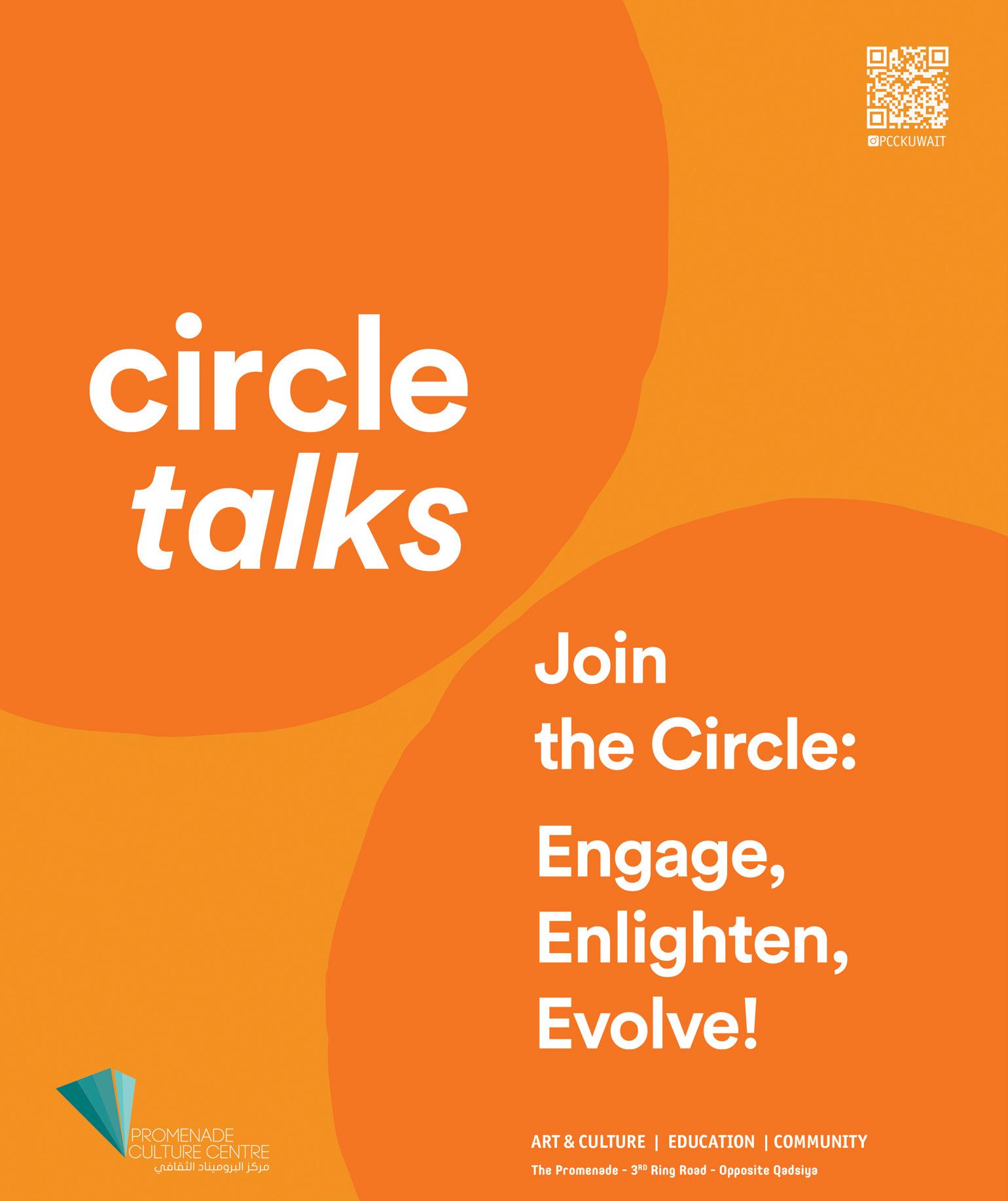
By Michael Grothaus
After months of anticipation, Apple’s official foray into the world of artificial intelligence is here. Apple isn’t being shy about how profound of an event this will be for the company and its future. In an interview with The Wall Street Journal, Apple CEO Tim Cook said that Apple Intelligence would make the experience of using Apple products “profoundly different” and likened Apple’s AI technology to the iPhone’s touch interface and the iPod’s click wheel in terms of innovation and importance.
That’s a high bar—and possibly a problematic one. That’s because the Apple Intelligence that gets rolled out this week won’t be a finished product but rather a work in progress. All of the Apple Intelligence features the company previewed in June won’t be coming to your iPhone or other devices just yet. So, what features are coming this week? Here’s what you need to know.
Apple Intelligence features on launch day
When Apple Intelligence launches this week, it will include a swath of new AI features baked into the iPhone’s operating system—iOS 18.1 (Apple Intelligence is also coming to supported iPads and Macs this week). These features can be broken down into four main categories, according to the release notes (published by 9to5Mac). They are:
Writing tools: Apple Intelligence will allow you to use AI to proofread, rewrite, and summarize text nearly everywhere you can type words in iOS—emails, messages, documents, and more. The proofreading function includes Grammarly-like features that allow you to choose better words and fix grammatical mistakes; rewriting abilities let you make your text sound more friendly, concise, or professional; and “summarizing” means that Apple Intelligence can read your text and generate a summary of the most salient points.
Photos: The most visually eye-catching feature of the Apple Intelligence launch will be the ability to quickly erase unwanted objects from photos. For example, you can tap on a street sign to delete it from that beautiful city sunset shot you took. Another cool feature is the ability to find photos and videos simply by describing what is in them, such as “black cat near cauldron.”
Siri: The iPhone’s digital assistant is a big beneficiary of the Apple Intelligence launch. Siri gets a revamped look—the borders of your iPhone’s screen glow when Siri is engaged—along with a more natural voice and the ability to understand requests in the context of previous requests.
Notifications: Perhaps the biggest productivity benefit included in the Apple Intelligence launch is the ability for Apple Intelligence to summarize notifications from multiple apps, showing you the most important information you need to act on.
In addition to the above Apple Intelligence features, others launching this week include the ability to use auto-generated, contextually

relevant smart replies so you can quickly respond to emails and text messages with a tap, and the ability to generate a text-based summary of audio recordings, which saves you the time of having to listen to the entire recording.
While many people will find the above features useful, they are, unfortunately, just a handful of the ones Apple promised when the company first previewed Apple Intelligence in June. Most of the headline-prompting, eye-catching features of Apple Intelligence are still months away—with some likely not making an appearance until 2025.
For example, Image Playground, the name Apple gives to Apple Intelligence’s ability to generate images in the style of sketches and illustrations that can be used in messages, presentations, and documents, is nowhere to be seen in Apple Intelligence in iOS 18.1. Neither is what is perhaps the most fun feature— Genmoji—which allows users to create custom emojis. Both these features are rumored to not be arriving until iOS 18.2 is released in December, according to Bloomberg.
But other features of Apple Intelligence are even further away. The most powerful features of Apple Intelligence likely won’t arrive until iOS 18.4, which isn’t expected until Spring of 2025, at the earliest. Bloomberg says that’s
when Apple Intelligence will finally gain the ability to understand context and allow Siri to control apps and “see” what is currently on users’ iPhone screen to help them complete tasks. These features will let Siri help you edit a photo and then send it to your friend—all you have to do is ask.
How to get Apple Intelligence on your iPhone
Although the launch of Apple Intelligence might feel to some users like an appetizer ahead of the main dish (that won’t arrive until 2025), Tim Cook and Apple believe it is a watershed moment for Apple.
Indeed, whether or not Apple Intelligence ends up being “iPhone moment” or “iPod moment,” iPhones are about to start performing tasks that the devices never could before—provided you have the right iPhone.
To get Apple Intelligence this week, you’ll need to download iOS 18.1 onto any iPhone 16 model or an iPhone 15 Pro or iPhone 15 Pro Max. While other iPhones will be able to install iOS 18.1, only the 15 Pro series and above will be able to run Apple Intelligence features.
To upgrade to iOS 18.1, go to the Settings app on your iPhone, tap General, and then Software Update.

By Lara Jadayel
As the leaves turn golden and crisp air sets in, fashion transitions with the changing season, bringing forth new textures, colors, and trends. This season Debenhams is treating us to beautiful Autumn 2024 collections from exciting brands like Forever New, OVS Kids, and Hobbs. Each offering a distinct take on fall fashion, blending comfort, elegance, and style. Whether you’re seeking sophisticated layers, fun and cozy kids’ wear, or chic outfits that embrace the season’s essence, these brands offer fresh, innovative designs for every wardrobe.

Modern Romance Meets Timeless Elegance with Forever New
Forever New’s Autumn 2024 collection masterfully combines the brand’s signature feminine charm with modern sophistication. This season, the focus is on romantic silhouettes with flowing fabrics, soft hues, and autumnal prints, ideal for transitioning from summer to cooler days. The color palette is a delightful mix of earthy tones such as burnt sienna, deep olive, and rust, balanced with softer blushes and pastels that add a feminine flair. One of the standout trends is the incorporation of jewel tones—
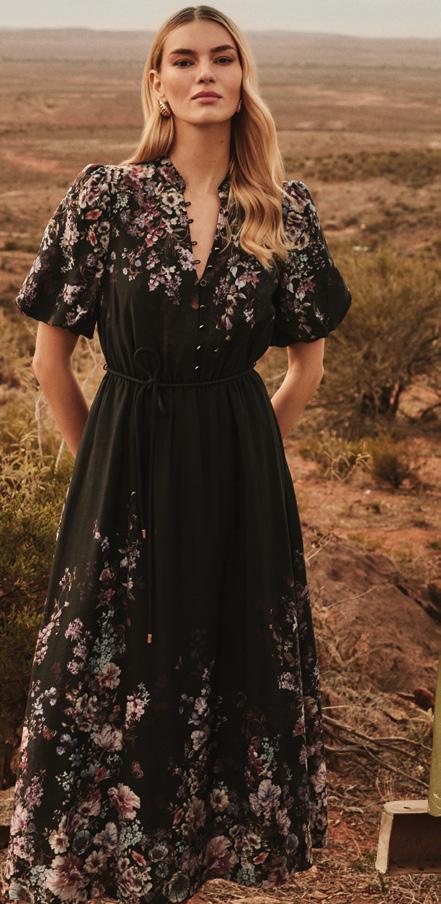
emerald greens, sapphire blues, and rich purples— which add a touch of luxury to the collection. Forever New’s pieces are designed for versatility, with many items easily styled up or down. Pair one of their flowing midi dresses with ankle boots and a wool coat for a chic daytime look or swap out the boots for heels and add bold accessories for an evening out.

OVS Kids are going to enjoy Fun, Cozy, and Playful Autumn Looks Fall is a season of playful exploration for children, and OVS Kids captures this energy. Designed with comfort, practicality, and a dash of whimsy, the collection is perfect for kids who want to look cute while staying comfortable throughout their adventures. From colorful puffer jackets to oversized knit sweaters, OVS Kids focuses on playful outerwear and cozy layering pieces. The puffer jackets come in vibrant shades of red, yellow, and teal, while some are adorned with fun prints like stars or animal motifs. For girls, OVS offers dresses in soft jersey fabric with autumnal prints like leaves, owls, and foxes, perfect for pairing with leggings and boots.

Hobbs presents you with Chic and Timeless British Style
Hobbs, renowned for its classic British aesthetic, brings forth a collection that unites elegance with functionality. Perfectly tailored pieces dominate the collection, with a focus on timeless designs and premium materials that can carry you through the season in style. Hobbs prioritizes high-quality fabrics such as wool, cashmere, and fine knits, ensuring both warmth and elegance. Rich textures like tweed and houndstooth are key trends this season,


giving a nod to classic British heritage. Details like pleats, buttons, and belt accents give these timeless pieces a contemporary twist, making them perfect for the modern woman who values understated luxury.
This autumn, Forever New, OVS Kids, and Hobbs have delivered collections that embrace the season’s trends while staying true to their unique brand aesthetics. Whether you’re looking for romantic, flowing pieces, fun and cozy children’s wear, or timeless, chic outfits, these brands offer something special to make
the most of the cooler months ahead. And it is all available at Debenhams now!
Shop these brands and more by visiting any of the Debenhams stores. Follow @debenhamsmiddleeast on Instagram and Facebook for all the latest updates. Call Customer Service: 182 1212.
Here’s what hiring managers are looking for, according to a new survey
By Catherine Fisher
The current job market is more competitive than ever, with pools of qualified candidates vying for fewer positions. It can feel daunting to stand out in such a crowded field but don’t be discouraged. A recent LinkedIn survey of 1,000+ hiring managers across the U.S. revealed important insights to demystify the job search and help job seekers get their applications to the top of the stack.
Using intel from the survey, here are some tips to help you stand out to hiring managers and get your foot in the door.
Demonstrate your enthusiasm and passion
Hiring managers are looking for more than just qualifications on paper. They want candidates with real passion for the role. Hiring managers revealed that true enthusiasm for the opportunity edged out a candidate’s previous experience in a similar role or industry.
Some candidates think they should hide their excitement about job opportunities in hopes that it will motivate the company to make a better offer. This couldn’t be further from the truth. Companies want to hire people who want to work there.
Demonstrate your enthusiasm and passion for a role by doing your homework and sharing what you admire about the company and its culture. Your interviewer likely knows you’re interested in landing a job, but what is it about this role or this company that you’re excited about? What would get you excited to go to work every morning? Be specific about why you want to work there.
Ask thoughtful questions and respond promptly to communications. This matters. Almost 40% of hiring managers surveyed said a significant delay in responses to calls or emails can prevent them from moving forward with an interview. Try and respond to any outreach within 24 hours.
Your enthusiasm should continue through the interview. “Bring high energy to each interview,” one hiring manager shared in the survey. “Strong eye contact, positive body language like smiling, and an enthusiastic tone are crucial. Be cautious not to come off as inauthentic, rehearsed, or forced, as that can be off-putting for the interviewer.”
And remember, a great interview is a conversation. Ask questions of your interviewer throughout the interview to make things conversational and show your interest in and understanding of the role.
Finally, bad-mouthing a previous job or manager can rub hiring managers the wrong way. Avoid speaking negatively about any past or present employer. If asked why you’re looking for a new role, focus on the future and what you hope to gain in your next opportunity.
The workforce is rapidly changing, driven by advancements in AI and evolving industry demands, and a growth mindset is catching hiring

managers’ attention like never before. More than half of those surveyed said they give extra consideration to applicants with a demonstrated commitment to ongoing learning and upskilling.
Take advantage of this by putting your commitment to learning front and center. Make sure any courses or certifications you’ve completed are listed on your résumé and your LinkedIn profile.
Go into the interview process prepared to highlight examples of how you’ve learned and upskilled throughout your career. And remember, learning doesn’t always just mean taking courses. Have you worked on learning new skills, attended a conference, or read a relevant business book?
You can also come prepared with questions that demonstrate your interest in growing and advancing, like asking if a role has a clear path for advancement, or whether the company offers opportunities for learning and development.
The number one reason hiring managers say they don’t interview a candidate is they don’t have the right skills for the role. In reality, this might not be true. It’s important to showcase all your skills, no matter how insignificant, unrelated, or nontransferable you think that skill might be.
Now’s the time to flex. Hiring managers are turning to skills to fill roles. Focus your application and résumé on the particular skills you can bring to the role and be explicit about how your skills might transfer if you’re changing roles or careers.
For instance, many people can list team leadership as a skill. But just because you’ve done
it, doesn’t mean you’re good at it. Make sure to share concrete examples of how you made an impact using a particular skill set, preferably tied to business metrics: “My team leadership led to the highest retention rate of any team in the company.”
Take the time to tell your story. Reading job titles off a résumé is like only reading the chapter names of a book—it doesn’t tell the whole story. How have you gotten to where you are, and how has that informed where you want to go next? It’s your job to do the work of connecting the dots when applying for jobs, especially if you’re not an obvious fit for the role.
“Rather than simply clicking submit to a job application, write a short cover letter that shows that you have researched the company that you’d be working for and why you’d fit the role and the company,” a hiring manager said in the survey. “Only a small percentage of people actually write cover letters. Just please remember to swap out the company’s name or the role you’re applying to. This happens way more than folks think.”
In today’s job market, standing out to a hiring manager requires more than just matching the qualifications on a job posting—it’s about demonstrating enthusiasm, adaptability, impact, and a growth mindset. As the landscape continues to evolve with technological advancements and changing industry needs, candidates who show a genuine eagerness to learn and grow are the ones who will capture the attention of hiring managers.





By Art Markman
There are days at work when there is an all-hands-on-deck, this-is-not-a-drill, drop-whatever-you’re-doing-and-help emergency. And on those days, you find a way to be useful to address the crisis at hand before you return to your regularly scheduled to-do list.
As long as emergencies are not a regular occurrence, these occasional adrenaline shots are reasonable. Some people find that these emergencies are a regular part of the work week. Something is always burning. And that is a problem for several reasons.
For one, living life in emergency mode is exhausting. For another, it is hard to make progress on any long-term plans at work when you are forced to grapple with some critical issue that has gone wrong now.
If everything at work feels like an emergency (and you are not, say, working in an ER), then there are a few things you can do to try to create a less-hectic work environment.
Recheck your priorities
Work is busy, and organizations try to staff up to have the right number of people to take care of current business while also preparing for the future. If everything you’re doing feels like an emergency, it’s possible that the problem is with your priorities.
One thing you may be doing is prioritizing the wrong things. Sometimes, you work on tasks that are easy to do and leave the ones that are tedious or difficult until later. If you delay too long in some of those jobs, then you are forced to do them in a hurry at the last minute. You need to prioritize making progress on tasks before the deadline looms too large.
A second strategy that may cause you trouble is spending too much time on everything. You know that the more work you put into anything, the better the job you’re going to do. So, there is almost always more polishing you could do on something before sending it off.
The trick to navigating this effort-accuracy tradeoff is to put in just enough effort to make it accurate enough to be acceptable. If you find that you’re dealing with too many emergencies, it is possible that you’re putting in so much effort on tasks that don’t deserve it that you’re neglecting other things that need attention.
If you’re working on the right things and putting in about the right level of effort, then you have too much to do. There are three ways to address a packed portfolio of activities.
It’s possible that you are being asked to do too many things. If the list of responsibilities you have been given exceeds the time you have to address them, then you need to sit down with your supervisors to talk about which things can be taken off your plate and given to others.

Relatedly, you may have some discretion about the projects you take on, but you say “yes” to too many things. Often, you agree to take something on because it seems like fun or you believe that you will impress the higher-ups if you volunteer for a role. At the time, it seems reasonable, but when it comes time to do the work, you are slammed. This common experience reflects the observation that you think about the future more abstractly than the present.
In the moment, you are just thinking that you will enjoy doing a task or benefit from having done it. But, you don’t think deeply about what your actual specific schedule is going to be on the days you need to do the work. As a result, you may add things to your future agenda that you don’t really have time to accomplish. Instead, you need to start keeping a to-do list that includes the number of hours a task is reasonably expected to take, so that you can budget your future time more effectively.
Of course, it may be that there really is too much to do. If that happens, talk with the team about whether you can hire someone new to address the extra work. You’ll still want to look at whether there is going to be a permanent workload or whether there is a temporary set of tasks that need to be done.
Often, there are a set of fixed demands to your job, and then some seasonal requirements. Perhaps there is extra reporting to be done at the end of a quarter or fiscal year, or a surge when particular clients need help. Analyzing where the overload is coming from is crucial to deciding whether the additional staffing you need is permanent or temporary. Understanding that demand will help you to best make the case to others in the organization that additional staff are required.
Finally, you also need to understand your own motivation and how it relates to your productivity. When the deadline for a project is far away, it’s easy to put off working too hard on it. You might even find yourself goofing off a bit rather than digging into a project that will ultimately need to be completed. If that project is going to need a lot of effort, though, you may have to work on it well in advance of that deadline. If you’re the kind of person who needs deadline pressure to work on those big projects, then break it up into chunks and give yourself a deadline for each of those pieces of the project. That will keep you on track and avoid an emergency situation as the final deadline looms.
Photo by Jalen Hueser on Unsplash.




By bazaar Staff
As the chill of winter sets in, MUJI introduces the winter fashion collection, bringing warmth, comfort, and minimalist elegance to the season’s wardrobe essentials. Renowned for clean, functional designs, the Japanese brand has once again crafted a collection that merges style with practicality, focusing this year on fleece and puffy jackets. Whether you’re braving the icy wind or just stepping out for a casual stroll, MUJI’s winter wear offers the perfect blend of comfort, simplicity, and timeless fashion..
Fleece has become a cornerstone of winter wardrobes, and MUJI’s Winter 2024 line takes this beloved fabric to new heights. Known for its lightweight yet insulating properties, fleece is the perfect solution for staying warm without the bulk. MUJI’s designers have emphasized quality and versatility, ensuring that each piece fits seamlessly into various aspects of everyday life.
This year, the collection features an array of fleece jackets, pullovers, and hoodies, available in soft, earthy tones and muted colors. From classic greys and blacks to soothing shades of beige, olive, and navy, the palette remains true to MUJI’s minimalist ethos, offering pieces that are easy to mix and match with any outfit. The fleece jackets have been crafted using recycled
polyester, highlighting MUJI’s ongoing commitment to sustainability. This eco-friendly approach doesn’t compromise on quality, as the fabric is still soft, breathable, and exceptionally warm.
A standout from the collection is the Fleece Zip-Up Jacket, which combines a relaxed fit with thoughtful details like deep pockets and a high neck for added warmth. Whether layered under a coat

or worn on its own, this piece is designed to keep you cozy in varying temperatures. Another highlight is the Fleece Half-Zip Pullover, which has a slightly oversized, boxy cut, giving it a contemporary, laidback feel. This item is perfect for casual outings or layering for a more rugged, outdoor look.
While fleece is ideal for mild to moderate cold, MUJI’s Winter 2024 collection also includes a range of puffy jackets that tackle the more severe chill. Puffy jackets, or “down jackets,” have long been a staple in winter fashion for their unbeatable insulation and lightness. MUJI has updated this classic piece with a focus on sleek, minimalist designs that retain all the warmth without the cumbersome feel often associated with winter outerwear.
MUJI’s Ultra-Light Puffy Jacket is a key piece, engineered with lightweight synthetic down that mimics the warmth of traditional goose down while being more resistant to moisture. This means you stay warm even on damp, misty days. The jacket’s water-repellent finish offers added protection, making it a versatile choice for unpredictable weather. With its streamlined silhouette, the UltraLight Puffy can be easily packed away, making it a great travel companion for those on the go. Available in a variety of colors including deep green, charcoal, and a striking mustard yellow, the jacket brings a pop of color to the typically subdued winter palette. For those seeking a little more length, the Long Puffy Coat provides extra coverage and comfort. The design is straightforward yet effective, with a clean, matte finish and subtle details that reflect MUJI’s signature minimalist style. Like the shorter version, the Long Puffy is insulated with synthetic down, ensuring warmth without weighing down the wearer. Additionally, it features adjustable cuffs and a hidden hood, providing practical solutions for cold, windy days.




What sets MUJI’s winter collection apart is its dedication to combining aesthetics with functionality. Each item is designed to be multipurpose, catering to both outdoor adventures and urban life. The collection’s minimalistic approach is a testament to MUJI’s philosophy of removing the unnecessary, allowing the user to focus on what truly matters: comfort, ease, and quality.
For the collection, MUJI has incorporated subtle, functional details that enhance the wearing experience. Many of the fleece pieces, for example, feature thumb holes at the cuffs, a small addition that makes a big difference in keeping hands warm. Similarly, the puffy jackets have been designed with inner pockets that help keep essentials like phones and wallets secure and warm, and adjustable hoods that can be hidden away when not needed. These are thoughtful touches that align with the brand’s ethos of simple, user-focused design.
Moreover, the collection reflects MUJI’s commitment to sustainability. The use of recycled materials in their fleece line helps reduce environmental impact, demonstrating that stylish, high-quality winter wear doesn’t have to come at the cost of the planet. By choosing sustainable alternatives, MUJI encourages its consumers to think more consciously about their fashion choices.
One of the joys of winter fashion is the ability to layer, and MUJI’s Winter 2024 collection is designed with layering in mind. The variety of styles and cuts across the fleece and puffy jackets allows for endless combinations, letting the wearer adjust for temperature changes throughout the day.
For instance, pairing a Fleece Pullover with an Ultra-Light Puffy Jacket creates a warm, stylish ensemble that can be easily adjusted by removing layers as needed. The muted colors across the collection also mean that different pieces can be layered together without clashing, maintaining a cohesive, polished look.
MUJI also introduces accessories in the Winter 2024 line, including scarves, beanies, and gloves that match the color palette of the fleece and puffy jackets. These accessories complete the

look, adding extra warmth while maintaining the simplicity and elegance characteristic of the brand.
MUJI’s dedication to sustainability goes beyond using recycled materials. The brand emphasizes creating pieces that are designed to last, favoring timeless styles over fleeting trends. This means that a MUJI puffy jacket or fleece pullover can remain a wardrobe staple for many winters to come, reducing the need for frequent replacements and contributing to a more sustainable approach to fashion consumption.
This collection continues this tradition by offering high-quality, durable items that can withstand the rigors of everyday wear. The simplicity of design ensures that each piece remains stylish



regardless of changing trends, making it a smart investment for anyone looking to build a reliable winter wardrobe.
For anyone looking to update their winter wardrobe, MUJI’s latest line offers the perfect blend of warmth, style, and practicality. Whether you’re heading out for a brisk walk, running errands, or embarking on a winter getaway, the collection ensures that you stay warm, comfortable, and effortlessly chic.
Visit the MUJI stores in 2nd Avenue – The Avenues, Grand Avenue – The Avenues and Al Kout Mall or shop online at muji.com.kw. For more information, follow MUJI on Instagram @mujimiddleeast.




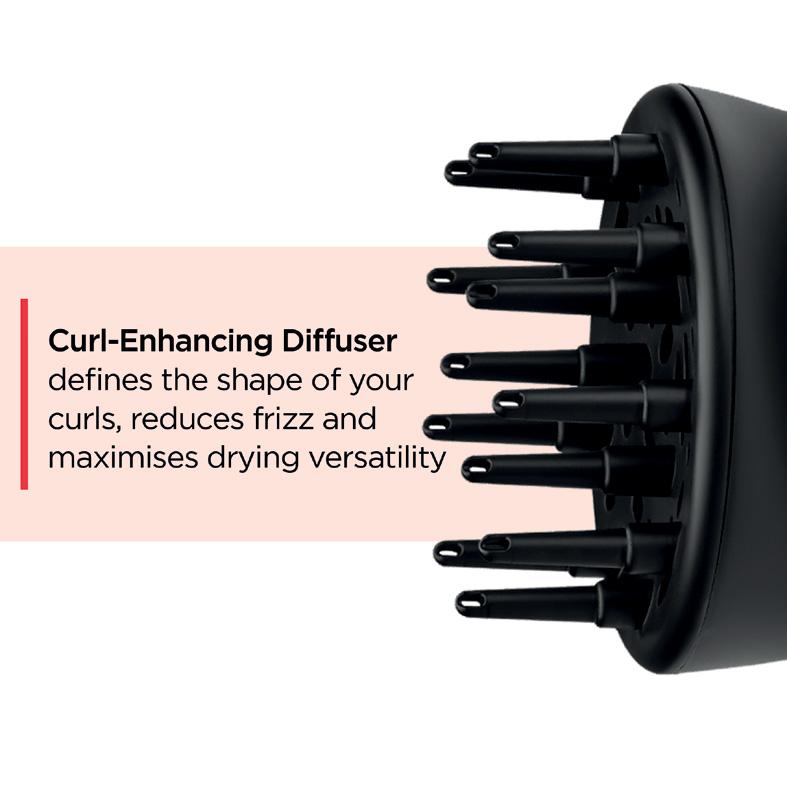

By Next Big Idea Club
Pascal Bornet is an expert in artificial intelligence who developed a framework for AI competencies. For the past 25 years, as a former executive at consulting firms McKinsey and EY, he has implemented AI projects for hundreds of companies around the world. Below, Bornet shares key insights from his new book, Irreplaceable: The Art of Standing Out in the Age of Artificial Intelligence.
1. Why it’s urgent that we all become irreplaceable
We’re standing at the edge of a massive shift in artificial intelligence. Becoming irreplaceable isn’t just crucial—it’s urgent. Let me introduce the concept I call “AI obesity.” Just like we got hooked on fast food, we’re now binging on fast creativity, fast connections, and fast decisions. We’re settling for “good enough” instead of striving for excellence, and we’re losing our jobs, businesses, and humanity in the process.
But AI itself isn’t the problem. It’s like food: not inherently good or bad; it’s all about how you consume it.
AI offers great benefits but also dangers. To thrive, we need the right competencies. That’s why I’ve developed the three competencies of the future framework. These competencies are about being AI-ready, human-ready, and change-ready. They’re designed to help individuals and businesses not just survive but thrive in this AI-driven world.
2. The AI-Ready competency
AI-Ready isn’t just about knowing how to use the latest AI tools. It’s about fundamentally changing how we approach work and life in an AI-driven world. For individuals, being AI-ready means three key things:
Develop an AI mindset. This means prioritizing efficiency over effort, value over volume, and collaboration over control. It’s about working smarter, not harder.
Strategically leverage AI. This means identifying which tasks can be automated or enhanced by AI and which require human touch.
Maintain AI literacy. The tech landscape is changing rapidly, and you need to keep up.
For businesses, being AI-ready extends beyond implementing AI systems. It’s about fostering an AI-embracing culture, ensuring ethical AI use, and mitigating AI-related risks. Central to this AI competency is building trust with employees, clients, and partners through transparency in AI implementation and clear communication about AI’s role. For example, companies must be open about AI’s use in decision-making and demonstrate how it benefits all stakeholders. This trust is fundamental to the future of AI in business.
3. The Human-Ready competency
The human-ready competency is counterintuitive. As AI handles more human capabilities, success lies in doubling down on our uniquely human traits, not

just learning to code. Our human abilities become our greatest asset, allowing us to work in synergy with AI and do things that neither humans nor AI could do alone.
I’ve identified three unique human abilities that AI can’t authentically replicate, which I call the Humics: genuine creativity, critical thinking, and social authenticity. These abilities are deeply rooted in our personal experiences, emotions, and human essence:
Genuine creativity emerges from unique personal experiences and emotional depths—areas where AI can only recombine ideas, not create new ones. Critical thinking goes beyond AI’s data processing capabilities, involving nuanced judgment and ethical considerations that only humans can provide. Social authenticity: while AI can simulate interactions, only humans can build deep, meaningful connections based on shared consciousness and genuine empathy.
For businesses, being Human-Ready means fostering a culture that values and nurtures these human capabilities.
4. The Change-Ready competency
In my years of research and consulting, I’ve come to realize that this might be the most crucial competency of all. I strongly believe that in the Age of AI, success isn’t determined by strength or intelligence, but by one’s capacity to adapt to change.
Here’s why: AI isn’t just changing things. By enabling the faster creation of new technologies, it’s accelerating the pace of change itself. We’re seeing disruptions happening faster and more frequently than ever before. In the coming ten years, we should expect to witness as many innovations as in the last century.
For individuals, being change-ready means developing resilience and adaptability. For businesses, it’s about creating structures and
cultures that thrive amid disruption, fostering innovation and flexibility.
Change-Readiness isn’t just about reacting to change; it’s about anticipating and stimulating change. I love the example of Toyota, which deliberately creates internal disruptions to keep the company adaptable and innovative. To train myself to change, I have chosen to live and work in several different places over the last 15 years, including Paris, Singapore, Shanghai, San Francisco, and Miami. I’ve developed specific techniques to build resilience, drawing inspiration from sources as diverse as neuroscience and nomadic cultures. For instance, I teach a breathing technique inspired by the Tuareg people of the Sahara that can help build mental resilience.
Those who master this competency will see opportunities where others see threats, pivoting and innovating in the face of disruption.
5. Reimagining education for the AI era
Our current education system, designed for the Industrial Age, is woefully inadequate for preparing kids for an AI-driven world. We’re still focusing on memorization and standardized testing when we should be nurturing the Humics: creativity, critical thinking, and emotional intelligence.
I propose a radical shift. Instead of banning AI in schools, we should teach kids how to work with AI effectively and ethically. Imagine a classroom where students use AI to enhance their learning and are taught to critically evaluate AI-generated information and add their human touch.
This is about preparing kids for a future where the nature of work itself might be radically different, impacting their life purposes. It’s also about teaching kids how to learn, unlearn, and relearn because in a rapidly changing world, this is the most crucial skill of all.


By Kimberly Jones
Have you ever heard the famous quote by John Wanamaker? “Half the money I spend on advertising is wasted; the trouble is I do not know which half.” In today’s data-driven world, this uncertainty no longer has to be the reality. Marketing science provides a sophisticated solution by leveraging advanced scientific methods, models, and techniques to unravel even the most complex marketing challenges.

At its core, marketing science draws from various data sources, such as customer behavior data, market trends, social media interactions, website analytics, and even offline metrics like in-store purchases. This data is then processed and analyzed using advanced tools and techniques to identify patterns, forecast outcomes, and recommend the best marketing strategies.
For example, let’s say you are launching a new product. Marketing science can help you understand which audiences are most likely to engage, which channels will give you the highest return, and even what messaging will resonate with customers the most. By integrating this data with insights from other agency disciplines—such as media planning, creative strategy, and research— you are able to fine-tune every aspect of your campaign.
How marketing science integration helps
Integrating marketing science with your current marketing strategy offers:
Clear, actionable insights, by transforming raw data and providing a comprehensive view of behavior and campaign performance.
A sharpened strategic focus by answering critical questions about audience, channels, messaging, and campaign impact.
Real-time campaign adjustment recommendations, giving the ability to maximize return on marketing investments.
To further understand its impact, let’s take a look at a real-life application. A medical device company had an initiative to reconfigure their sales team towards optimal volumes and coverage areas, with media being the key driver of new leads. To maximize return on investment, they buit a custom, tech-enabled marketing science simulation tool. This tool was able to forecast thousands of media
scenarios to find the optimal investment and channel mix to achieve monthly lead goals. This investment led to a 92% accuracy in predicting leads and a 30% decrease in cost-per-new-lead.
What about budget? The beauty of marketing science is that predictive modeling can be tailored to provide insights that maximize marketing dollars, at any budget, enabling clients of all sizes to make smarter investments.
At Butler/Till specifically, we believe in the power of marketing science to drive real results. By leveraging data, further integrating agency departments and collaboration, and delivering actionable insights, ultimately we help our clients achieve measurable success.



By bazaar Staff
For the H&M Holiday collection, the mood is timeless style and eternal connection. Garments dazzle with streamlined cuts, jubilant embellishments, and fresh twists on retro detailing.
The Holiday Collection draws inspiration from the modernity and elegance of the 60s and 70s. It takes particular inspiration from the couture fashions of that era, and effortlessly emphasizes their relevance for today. There is a marked focus on silhouette: the stark lines of the 1960s partywear, alongside the longer, glamourous styles of 1970s evening styles.
The mood is sleek, graphic, and monochromatic, using unexpected volumes and proportions to create distinctive styles for every
wardrobe, and every celebration. The minimal, sophisticated silhouette of the collection is offset by a playful approach to adornment. Black and white looks are accented with sequins, bows, and decorative embroideries. A classic tuxedo shirt is embellished at the cuffs with crystals, and tuxedo shorts suit comes densely embroidered with deco detailing. Tactile finishes emerge throughout the collection. A new, hyper-textural fringe is used to create a top and trouser set that calls to mind the texture of faux fur. Evening bags are finished
with extended crystal fringe that add drama and movement – perfect for dancing.
Accessories harken to the luxurious style of the 1960s: bags and shoes are embellished with ‘mirror deco’ detailing that draws from the aesthetic of the space age. Flat shoes look perfect with minidresses, offering a more youthful, gamine look.
For men, the collection draws from the louche, dandyish glamour of mid-century fashion. Fluid shirting and pleated trousers sit alongside sequined tailoring.

Together, the collection is an invitation to express a timeless yet confident sense of style: clothes to be worn for the most special of occasions.
“For Holiday 2024, we are championing a new kind of elegance: one that is charming and exuberant, but utterly modern. We’re bringing the elevated style of 60s and 70s couture into the contemporary wardrobe.” - Eliana Masgalos Duarte, Womenswear Design Director, H&M
For the Holiday 2024 campaign, H&M celebrates and champions love in all its forms - between a parent and child, between siblings, between lovers. Campaign stars join their loved ones in a celebration of togetherness, as they showcase the H&M Holiday 2024 collection. Moments of tenderness are caught across generations, families, and backgrounds, in a series of unguarded and intimate portraits.
The 2024 Holiday Collection will be available from 7 November in selected stores with prices starting from KWD 8.99 and online.


By The Conversation
You can probably think of a time when you’ve used math to solve an everyday problem, such as calculating a tip at a restaurant or determining the square footage of a room. But what role does math play in solving complex problems such as curing a disease?
In my job as an applied mathematician, I use mathematical tools to study and solve complex problems in biology. I have worked on problems involving gene and neural networks such as interactions between cells and decision-making. To do this, I create descriptions of a real-world situation in mathematical language. The act of turning a situation into a mathematical representation is called modeling.
Translating real situations into mathematical terms
If you ever solved an arithmetic problem about the speed of trains or cost of groceries, that’s an example of mathematical modeling. But for more difficult questions, even just writing the real-world scenario as a math problem can be complicated. This process requires a lot of creativity and understanding of the problem at hand and is often the result of applied mathematicians working with scientists in other disciplines.
As an example, we could represent a game of sudoku as a mathematical model. In sudoku, the player fills empty boxes in a puzzle with numbers between 1 and 9 subject to some rules, such as no repeated numbers in any row or column.
The puzzle begins with some prefilled boxes, and the goal is to figure out which numbers go in the rest of the boxes.
Imagine that a variable, say x, represents the number that goes in one of those empty boxes. We can guarantee that x is between 1 and 9 by saying that x solves the equation (x-1)(x-2) . . . (x-9)=0. This equation is true only when one of the factors on the left side is zero. Each of the factors on the left side is zero only when x is a number between 1 and 9; for example, (x-1)=0 when x=1. This equation encodes a fact about our game of sudoku, and we can encode the other features of the game similarly. The resulting model of sudoku will be a set of equations with 81 variables, one for each box in the puzzle.
Another situation we might model is the concentration of a drug, say aspirin, in a person’s bloodstream. In this case, we would be interested in how the concentration changes as we ingest aspirin and the body metabolizes it. Just like with sudoku, one can create a set of equations that describe how the concentration of aspirin evolves over time and how additional ingestion affects the dynamics of this medication. In contrast to sudoku, however, the variables that represent concentrations are not static but rather change over time.

But the act of modeling is not always so straightforward. How would we model diseases such as cancer? Is it enough to model the size and shape of a tumor, or do we need to model every single blood vessel inside the tumor? Every single cell? Every single chemical in each cell? There is much that is unknown about cancer, so how can we model such unknown features? Is it even possible?
Mathematical models help find real solutions
After writing a mathematical problem to represent a situation, the second step in the modeling process is to solve the problem.
For sudoku, we need to solve a collection of equations with 81 variables. For the aspirin example, we need to solve an equation that describes the rate of change of concentrations. This is where all the math that has been and is still being invented comes into play. Areas of pure math such as algebra, analysis, combinatorics, and many others can be used—in some cases combined—to solve the complex math problems arising from applications of math to the real world.
The third step of the modeling process consists of translating the mathematical solution into the solution to the applied problem. In the case of
sudoku, the solution to the equations tells us which number should go in each box to solve the puzzle. In the case of aspirin, the solution would be a set of curves that tell us the aspirin concentration in the digestive system and bloodstream. This is how applied mathematics works.
When creating a model isn’t enough
Or is it? While this three-step process is the ideal process of applied math, reality is more complicated. Once I reach the second step where I want the solution of the math problem, very often, if not most of the time, it turns out that no one knows how to solve the math problem in the model. In some cases, the math to study the problem doesn’t even exist. When approaching unsolved applied math problems, the distinction between applied and pure mathematics often vanishes. Areas that were considered at one time too abstract have been exactly what is needed for modern problems. This highlights the importance of math for all of us; current areas of pure mathematics can become the applied mathematics of tomorrow and be the tools needed for complex, real-world problems.


By Emily Guy Birken
The human brain is a marvel of evolution. We are able to make quick and relatively accurate decisions based on very little information because we learn from previous experiences as well as the experiences of others. Unfortunately, that marvelous ability is also a serious pitfall, since we’re likely to jump to conclusions. This sometimes leads to stupid money mistakes.
Specifically, we humans are vulnerable to cognitive biases that lead us astray. These biases are systematic patterns in how we think that can lead to less-than-rational conclusions and behavior. For example, I can vividly recall waffling on whether or not I wanted to buy a shirt because it seemed a bit expensive–but when I learned I could get a second shirt for half-off, I quickly purchased both. Which meant I spent even more money to get two shirts I wasn’t sure I wanted.
These are not the actions of a rational agent. The good news is that cognitive biases do follow patterns and can be predicted. Here are some of the most common biases that could be affecting your financial decisions.
Anchoring: Cheap isn’t what you think it is
Deciding how much you’re willing to pay for something may feel like a straightforward and rational process, but you have a lot less control over it than you think you do. That’s because we all carry anchor prices in our heads of what is an appropriate amount to pay for things, which leads to frequent money mistakes.
Combating price anchors
From dining out to real estate to the cost of financial advice, marketers set anchor prices that convince you to spend more than you otherwise would. It was the effect of anchoring that persuaded me to buy two shirts for more money than I was willing to pay for one.
Fighting this cognitive bias isn’t easy because money has no inherent value. There is no way to determine a rational or natural price for anything, because goods and services are worth what people are willing to pay for them. However, you can create self-imposed anchors to keep marketing anchors from muddying your thinking.
fallacy: When you keep digging
Sunk costs are the resources—like money, time, or energy—that have already been spent on something and cannot be recouped.
For example, a college student who is halfway through the course load to become a teacher has decided they want to be a marine biologist instead. The student can’t get back the money and time they have already spent on their teaching degree, but those sunk costs should have no bearing on the student’s decisions going forward. The money and time can be recouped, so they need to make decisions as if the sunk costs don’t matter.

A good way to fight the sunk cost fallacy is to imagine you have just woken up with amnesia. Without any knowledge of the past sunk costs, what’s the best way to move forward? The aspiring marine biologist might realize that they are much more interested in starting their scientific education from scratch than continuing with the teaching degree that’s already in progress.
Asking yourself how you would react to the situation without prior knowledge of it can help you determine the best and least expensive course of action.
Availability heuristic: When statistics don’t apply to you
In financial decisions, the availability heuristic makes us believe we are all temporarily embarrassed millionaires. We’re all sure the winning lotto ticket, the big win in Vegas, or getting on the ground floor of the next version of crypto currency is just around the corner. It’s easy to remember the individuals who have done each of these things, while the folks who quietly become millionaires through frugal living and savvy longterm investments generally don’t get glowing coverage in the news.
Combating availability heuristic
There’s a two-pronged trick to avoiding money mistakes caused by availability heuristic. The first is to ask yourself how likely something is.
Yes, you have the same chance of winning the billion-dollar Powerball as anyone else who buys a ticket—but just how likely is it? If statistics aren’t on your side, then don’t count on it.
The second part is recognizing when you’re making emotional decisions. It can be easy to reject the low statistical probability of getting in on the ground floor with the can’t-fail Bolivian tin mine you’re investing in when you’re busy imagining riches you’ll be swimming in and how satisfying it will be to rub it in your ex’s face. If you are focused on how a particular outcome will make you feel, despite its low probability, you’re likely succumbing to availability heuristic rather than rational thinking.
We are not logic-minded actors who carefully consider the cost-benefit analysis before each decision. Instead, each one of us is several dozen mental shortcuts in a trench coat pretending to be a rational adult.
Learn to recognize when you’re using someone else’s anchor prices, falling for the fallacy that sunk costs can somehow be recouped, or assuming that something is more likely because you can easily recall examples of it. Knowing these cognitive biases can help keep you from tripping into your next financial mistake.







By bazaar Staff
Experience the perfect blend of Kuwait’s rich seafaring history and modern luxury at the Radisson Blu Hotel, Kuwait. This iconic destination offers more than just accommodation; it provides an immersive journey through the nation’s maritime heritage, coupled with exceptional dining and event hosting options.

Al Hashemi II: A Guinness World Record Holder
Start your journey by exploring Al Hashemi II, the world’s largest handmade wooden dhow. This impressive vessel, stretching 80.4 meters in length and 18.7 meters in width, is a testament to traditional Kuwaiti craftsmanship. Completed in 1998, it was crafted using an eclectic mix of materials, including mahogany and ekki logs from Cameroon, planks from the Ivory Coast, and pine logs from Oregon. The sheer scale and artistry of Al Hashemi II have earned it a place in the Guinness World Records, symbolizing Kuwait’s enduring maritime legacy.



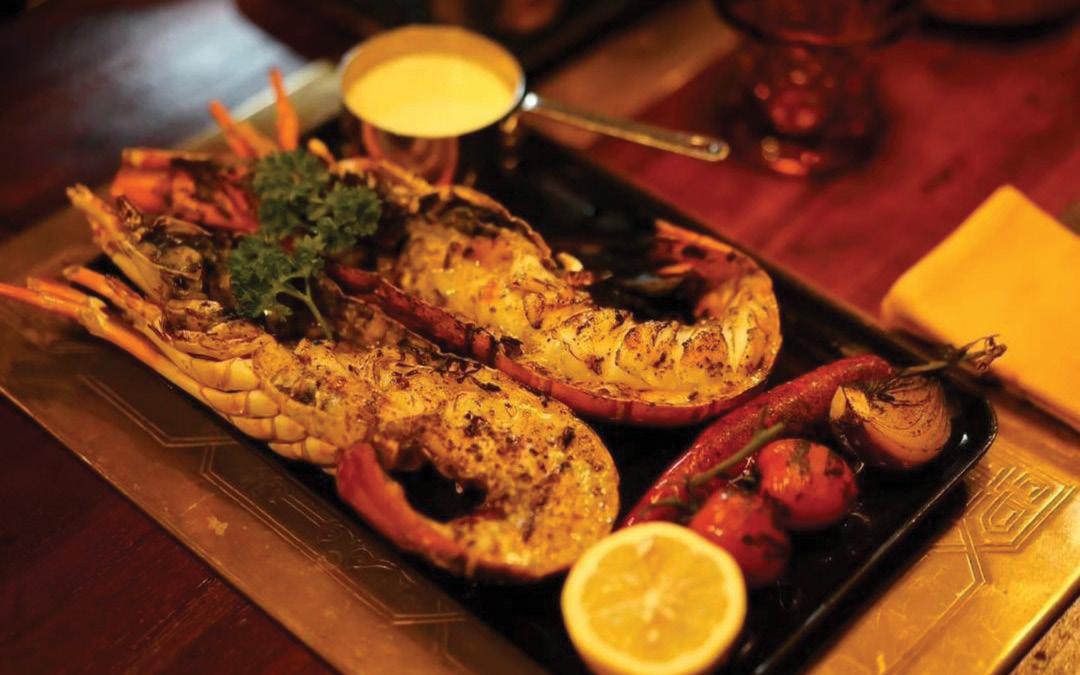
Located next to Al Hashemi II is the Marine Museum, a must-see for anyone interested in Kuwait’s seafaring past. The museum displays large-scale model dhows, traditional sailing equipment, and informative exhibits that highlight the vital role of dhows in the lives of Kuwaitis before the oil boom. Visitors can gain a deeper understanding and appreciation of the rich maritime culture that has shaped Kuwait’s history.
No visit to the Radisson Blu Hotel would be complete without a meal at Al Boom Steak & Seafood Restaurant. Situated aboard a traditional Arabic dhow, the restaurant merges historical charm with modern elegance. With lavish gold leaf décor, it offers a refined setting for an unforgettable dining experience. Guests can indulge in expertly crafted steaks made from certified Angus beef, ensuring a culinary journey that is both authentic and sophisticated.
For reservations, call 2567 3430.
Beyond its historical and cultural significance, Al Hashemi II also serves as an exceptional event venue. Its stunning parquet-floored interior is perfect for a variety of occasions, from conferences and seminars to weddings. The dhow’s architectural beauty and historical charm create a unique backdrop that enhances any event, ensuring a memorable experience for all guests.
For booking inquiries, call 2567 3252.

The Radisson Blu Hotel, Kuwait, is more than just a place to stay; it’s a celebration of Kuwait’s maritime heritage and unparalleled hospitality. From the grandeur of Al Hashemi II and the fascinating exhibits at the Marine Museum to the exquisite dining at Al Boom Steak & Seafood Restaurant, the hotel offers a unique experience that honors the nation’s seafaring legacy. Guests can immerse themselves in this cultural journey, savor delightful cuisine aboard a traditional dhow, and host unforgettable events in a setting that blends historical grandeur with modern luxury.
Discover the heart of Kuwait’s maritime heritage at the Radisson Blu Hotel, Kuwait. With its seamless integration of history, luxury, and hospitality, it remains a must-visit destination for both locals and travelers. Whether you’re here to explore, dine, or celebrate, the Radisson Blu Hotel invites you to dive into a unique cultural experience.


Scan the QR codes for a virtual tour.
For more information, follow Radisson Blu Hotel on Instagram @radissonblukuwait or call 2567 3252.




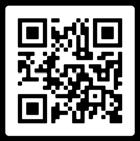
By Kim Meninger
Hard-working professionals are reporting record-breaking levels of stress. One cause: ever-increasing workloads.
Too often, high-achievers who are known for tackling tough challenges, become their managers’ go-to person for addressing difficult problems. However, their can-do attitudes and tendency to overextend themselves can put them in a bind.
Here’s why it is important to push back against a manager who asks you to take on too much work—and how to tactfully do so yourself, step-by-step.
The importance of knowing you work limits
For many high-achievers, their identities and confidence levels are tied to their perceived productivity. Saying “no” or pushing back on deadlines can make them doubt themselves and question their value. “If I can’t meet my manager’s expectations, then I’m not worthy of this role,” they may tell themselves. But there are only so many hours in a day. While high-achievers value their reputations as someone that leaders can rely on, the approach of always saying “yes” to more work is unsustainable and can lead to burnout.
Many high-achievers believe they’re failing if they can’t do everything at once. What they don’t realize is that the inability to take on ever-expanding workloads and meet increasingly ambitious deadlines does not reflect their capabilities as professionals. When one person is expected to always take on more work, it is often a sight of a broader business problem, not a personal defect or character flaw. What is needed to address this problem is not greater confidence, ambition, or focus—it’s additional resources.
If your workload is full and you are reaching your breaking point, it’s time to stop blaming yourself and set boundaries that will help you do your best work and set your organization up for success. Take these three steps to push back on your manager when you are given too much work.
Unfortunately, diligent work doesn’t always speak for itself. Putting your head down and working hard can work well when you are a student, but it doesn’t translate to today’s workplaces. Managers are often too swamped to notice all of the great work their coworkers are doing. So, the first step in pushing back is to make your work visible. Set up a sustainable system for sharing information with your manager. For example, you can send a weekly rundown summarizing your key accomplishments and initiatives. But here’s the key: Be sure to convey the complexity of your work. If you oversimplify things, your manager will never appreciate the level of effort required to do your job.
As your manager starts to grasp the full scope of your work, they will get better at gauging your bandwidth. And while they will likely continue to lean on you for challenging assignments, they will

be less likely to make inaccurate assumptions about your capacity.
Adopt a consulting mindset
Imagine this: Your boss asks you to take on a new assignment. Your plate is already overflowing but you want to be a strong team player. How do you respond? If you’re a high-achiever who wants to make a good impression, you may say “yes”— whether or not you have the appropriate time and resources available to you.
But let’s flip the script. Imagine you are an external consultant. Would you blindly jump into this project? Of course not! You’d ask about scope, deadlines, budget, and resources. You’d then take time to review the details and craft a proposal that fits the goals and constraints.
When responding to your manager’s requests, adopt a consulting mindset. Leverage your expertise to tell your manager what you think is realistic. Remember that you are the expert in your job. Only you have a full understanding of what it takes to accomplish this task while balancing your other responsibilities.
Don’t prop up a broken system
Organizations have a tendency to squeeze their top performers dry. When these high-achievers keep
saying “yes” to more work and fail to push back, they set a dangerous precedent. Managers, who typically lack an understanding of the full effort required to do the work, begin to expect miracles.
Consistently saying “yes” to more work doesn’t just hurt you, it hurts your business. If you aren’t giving your manager accurate information about what’s required to perform your role, they are flying blind. As a result, they likely aren’t advocating for additional headcount or budget in their leadership meetings. And if you leave your role, it will be difficult, if not impossible, for them to fill your shoes.
Here’s the bottom line: Don’t prop up a broken system by accepting more work than is practical. If you’re not set up for success, speak up. The organization needs to see the cracks in the system to fix them. Don’t hurt your team—and yourself— by setting an unsustainable precedent.
If you’re a high-achiever who wants to excel, you can’t do it by taking on increasingly unsustainable levels of work. To maximize your impact, make your work visible, think like a consultant, and flag cracks in the system to your boss. That’s how you’ll really shine.
NATURALLY FOR A CRISP REFRESHING TASTE
VOSS IS ONE OF THE WORLD’S PUREST BOTTLED WATERS PURE









By Yonason Goldson
How do we acquire wisdom? We start by acquiring knowledge. But we can’t stop there, any more than we can build a Maserati by simply extracting iron ore from the earth. We acquire wisdom through the refinement of knowledge, but also the refinement of ourselves.
That’s the message outlined in the classic philosophical treatise Ethics of Fathers. In one foundational teaching, the sages of ancient Judea exhort us to develop 48 distinct attitudes and practices in our pursuit of higher wisdom. The list includes the following:
Love people, love charity, love uprightness, and love rebuke.
The first three are self-evident. We can all appreciate the virtue of loving our fellow human beings, of cultivating compassion for those in need, and for aspiring to act honestly and justly in every aspect of our personal conduct.
But how many of us love rebuke? Do we honestly look forward to criticism, even when we ask for it? Are we not inclined to lash back defensively when anyone, no matter how wellintentioned, presumes to find fault with us?
Intellectually, we know that we need correction if we want to improve. The music teacher shows us how to finger the keys or draw the bow across the strings. The fitness trainer warns us against overstraining our muscles when we work out. The tennis coach guides us to perfect our backswing.
Why is it so difficult for us to accept even gentle guidance to improve our learning style, business performance, or personal character?
Perhaps the problem is with the language we use. Rebuke seems to focus on what we have done wrong. What we need is a better way to communicate the message of how we can do better looking ahead.
Fortunately, there is a useful synonym for rebuke, and it is our current entry into the Ethical Lexicon:
Reprove (re·prove/ ri-proov) verb To express disapproval or censure in response to improper behavior.
At first glance, this doesn’t seem to solve our problem, since dictionary definitions of reprove and rebuke are virtually identical. If so, what’s the difference between them?
Consider the respective etymologies. Rebuke comes from the old French for beat or cut down, implying shame, defeat, and disgrace. In contrast, reprove suggests a second chance to prove our quality or ability. Indeed, the Hebrew for reprove shares the root meaning of validate – to reassure, make good, and rise above.
Often, the ease with which we receive reproof has more to do with how it is given. When the intent is clearly for our benefit when the one giving

reproof offers it in a way that projects genuine concern for our welfare and desire to guide us toward self-improvement, we’re much more likely to not only accept criticism but even appreciate it.
Of course, we aren’t in control of how others choose to communicate their suggestions to us. But we can be more thoughtful about how we convey uncomfortable information to others.
First, choose the right time and place: Criticism should always be given in private, and at a moment when the receiver is not pressed for time, harried, or distracted. It is best eased into by asking permission: “Would it be okay if I discussed a matter that needs attention?”
Second, give the receiver an opportunity for self-reflection: Even a simple “why” question might be interpreted as an attack: “Why did you do that?” can imply blame, no matter how gently it is asked. Instead, you might try: “I noticed that you did such-and-such. Could you help me understand your intention?”
Third, focus on the future rather than the past: “If next time you handled the situation this
way, do you think that might produce a better outcome?”
Either implicitly or explicitly, we need to make every effort to communicate confidence in both attitude and aptitude as well as appreciation for commitment to the job. Others will naturally respond to positive expectations; conveying a sense of shared higher purpose provides a worthy goal that is encouraging and aspirational.
We can use the same techniques in our selftalk. Beating ourselves up over mistakes might be better than making excuses for ourselves. But better still is talking ourselves up by committing to do better next time and contemplating just how to make that happen.
By reproving ourselves and others the right way, we contribute to a culture in which every misstep sets the stage for us to prove that we can recover from failure and move steadily forward on the road to success.

By bazaar Staff
It’s the time of year we start craving more time out doors and Turkish cuisine. There’s only one place where you can find the perfect blend of complex flavors that you can enjoy in the fresh air and that is Emirgan Sütiş Murouj. Craving Turkish food often feels like a yearning for a feast of bold, layered flavors and comforting, hearty dishes. Imagine the aromas of freshly grilled meats, warm spices, and the smokiness of charred vegetables mingling together. All of which can be found at Emirgan Sütiş—whether it’s the savory, flaky goodness of börek, the tangy and creamy notes of a rich yogurt dip, or the satisfying bite of a well-seasoned kebab. This cuisine, with its emphasis on fresh herbs, tender meats, and vibrant spices, captures the senses.
For many, a craving for Turkish food is also a desire for the experience itself, one that is traditionally shared with friends and family, fostering connection and delight in every dish. Making it the perfect meal for the cooler months of fall and winter.
Sütiş is a renowned Turkish brand with deep roots in traditional Turkish cuisine and a commitment to quality and authenticity. Established to bring the rich, time-honored flavors of Turkey to a wider audience, Sütiş emphasizes the use of fresh, locally sourced ingredients, creating dishes that honor the Turkish culinary heritage. The brand is known for its extensive menu, featuring classic Turkish staples like döner, kebabs, mezes, and an impressive range of dairy products such as yogurt and cheeses, which highlight Turkey’s agricultural richness. Beyond the food, Sütiş prides itself on providing a warm, inviting atmosphere that mirrors Turkey’s cultural emphasis on hospitality and community.
Emirgan Sütiş Murouj reflects the vibrant and diverse culinary tradition built on a rich history and cultural tapestry of Turkey. Spanning influences from the Middle East, Central Asia, the Mediterranean, and the Balkans. The Mujour location is perfect for an outdoor breakfasts or


opt for sitting indoors by the fountain and enjoy the vibes and music while you enjoy lunch or dinner. And you can’t leave without hitting the dondurma cart outside, for a sweet treat to brighten your day.
The extensive menu is perfect for those of us who love to sample a little bit of everything, but if you’re feeling indecisive and don’t know where to start, we’re here to offer a little guidance.
If you’re a morning person and are there for breakfast, you’ll quickly learn that Emirgan Sütiş offers an impressive breakfast spread that embodies the richness and variety of traditional Turkish breakfast. Their “Emirgan Breakfast” set is ideal for four people and includes scrambled eggs, a curated selection of Turkish cheeses like Cecil, Ezine, and Kashkaval, and fresh labneh for a creamy start. Accompaniments like black and green olives, honey kaymak (a thick, clotted cream with honey), Turkish jams, and fresh vegetables (green pepper, tomato, and cucumber) bring in vibrant flavors and textures. The set also includes hummus, spicy potatoes, Sultan sauce, tahini with molasses, and four cups of Turkish tea, creating a hearty, satisfying experience.
In addition, the “Egg with Sujuk” offers a simple yet flavorful option, featuring three eggs with spicy Turkish sujuk sausage prepared to your choice (fried, scrambled, or over-easy). For a must-try specialty, the Turkish mıhlama (also known as muhlama) brings a taste of the Black Sea region, where local cheeses are melted with cornmeal for a dish known for its deliciously gooey cheese pull and intense flavor. Add in cheese and potato böreks and you’re good to go! When we’re trying to climb the entire food pyramid in one dish we order the “Cheese & Sujuk Pita”; a freshly made Turkish pita prepared with cheese and your choice of sujuk. Proteins, carbs and melted cheesy goodness in every bite.

Add a “Grilled Halloumi” for some fresh tomato and cucumber slices to add veggies to your diet.
Main dishes at Emirgan Sütiş often revolve around grilled meats, fresh vegetables, hearty grains, and an abundance of herbs, creating a balance of textures and tastes. We love the “Donner Fatteh” that serve a generous portion of doner slices topped tahini sauce with yoghurt, sliced almonds, crispy bread, chickpeas and pomegranate seeds. The “Hummus Doner” shows that hummus is exceptional when paired with Turkish doner and their special sauce. Another showstopper is the “Beyti Iskender”, meat kebab prepared with parsley and garlic,


served on pita bread with yoghurt, tomato sauce, grilled tomato and grilled chili.
The real stars at Emirgan Sütiş are the grilled dishes. “Kuzu Lokum” features grilled round sliced lamb loin served with sautéed vegetables and spinach, french fries or baked potato, with your choice of white rice or bulgur. Alternatively “Urfa Kabab” is a portion of grilled kebab served with onions, grilled chili and tomato, french fries, with your choice of Bulgur, white rice, Baked Potato or French Fries. You can even try the “Eggplant Kebab” for a vegetarian option, which is the same as the Urfa but with Eggplant kebabs instead.




You can only end a meal properly with dessert, anything else is just wrong and you have lots of great options at Emirgan Sütiş. From “Fistikli Sarma”, rolled baklava stuffed with pistachio and Havuç dilimi with ice cream to the renowned “Trilice” caramel and milk cake, your sweet tooth will be satisfied.
Turkish cuisine places importance on communal dining, often centered around shared plates and leisurely meals, and there’s no where better than Emirgan Sütiş to enjoy the connecting with friends and family while also enjoying exquisite flavor.
Follow @sutis_kw on Instagram for mouth watering visuals. Order using the Talabat, Bilbayt or Deliveroo app or call 185 0005.













By Doug Aamoth
The National Institute of Standards and Technology (NIST) recently released updated password guidelines that might surprise you in that they’ve made the dark art of keeping yourself secure slightly less cumbersome than before.
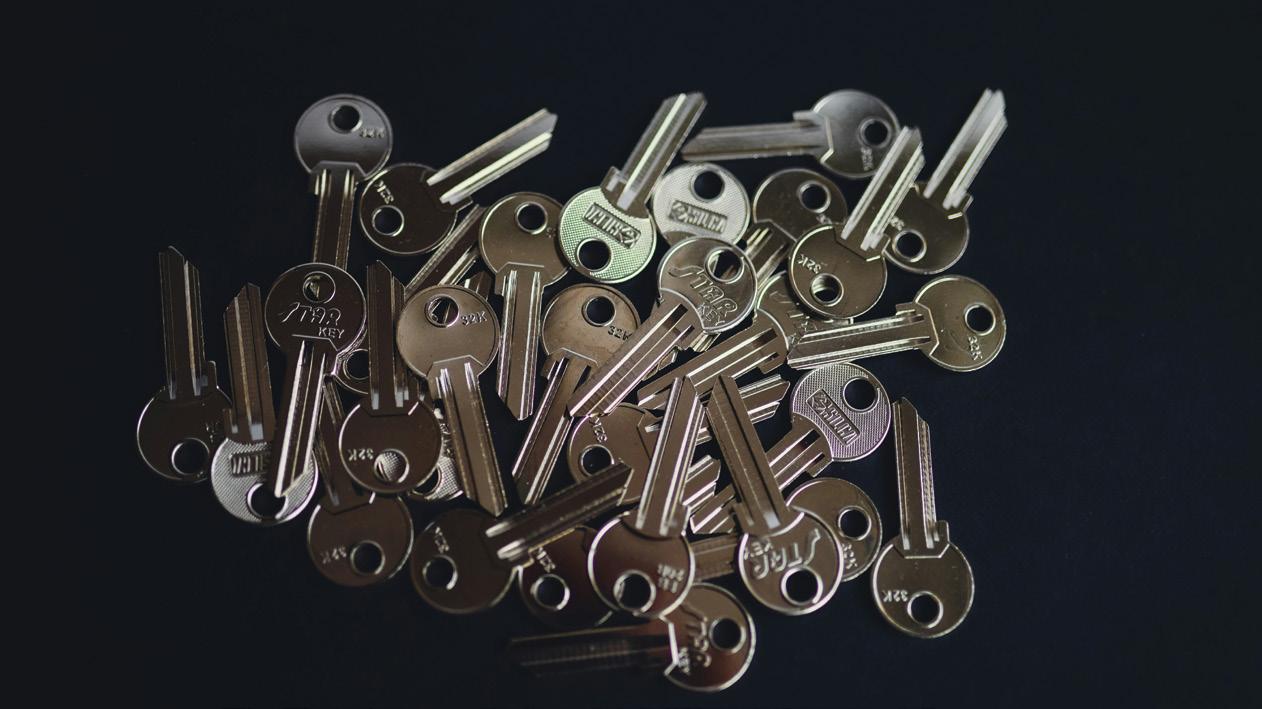
As you create accounts or update existing ones, you might start seeing these changes reflected in the requirements and guidelines you encounter. Remember, while these guidelines make things easier, it’s still crucial to use unique passwords for each account. And you really should be using a password manager to help keep track of them all.
Here’s what you need to know about the new rules of passwords.
Longer is stronger
While long passwords have always been more secure than short ones, they’re now more important than ever.
Instead of worrying about mixing uppercase and lowercase letters, numbers, and symbols, focus on creating longer passwords. Aim for at least 8 characters, but the longer, the better: NIST says 15 is a good minimum. (Hint: If you use a password manager, long passwords are just as easy to wrangle as short ones.)
The new guidelines recognize that password length is more important for security than complexity. A long, simple phrase can be much harder to crack than a short, complex one.
Retire routine password changes
Unless a particular app or service mandates it, you no longer need to change your passwords every few months—only if there’s a chance one’s been compromised.
Regular password changes often lead to weaker passwords as people tend to make minor, predictable modifications—Betty234 instead of Betty123, for example. It’s more effective to choose and keep a strong password until there’s a reason to change it.
Passphrases are in
Also not totally new advice, but something to consider: using a string of random words or a memorable phrase as your password.
For example…
“NIST-says-to-use-super-long-passwords” …is both long and reasonably easy to remember. Passphrases like this can be much more secure than traditional passwords while being easier to recall without writing them down.
Multi-factor authentication Is a must
While not strictly about passwords, using a second form of verification (like a code sent to your phone) is
highly recommended for extra security if it’s offered to you.
This adds an additional layer of protection, making it much harder for unauthorized users to access your accounts even if they somehow obtain your password.
Advice for password people
If you’re in charge of setting password policy for your organization, NIST offers the following guidance. No more tricky rules: Dump the confusing requirements for different types of characters. You can now require simple phrases that are easy for your users to remember but hard for others to guess. No more security questions: Those “What was your first pet’s name?” questions are too easy for others to guess or find out via social media. Let users max out their passwords: The updated guidance calls for setting a minimum password length of 15 characters and allowing a maximum length of 64.



By Francine Maroukian
I am not a business coach. But as life in corporate America shifts, I’ve become a version of one to many of my C-suite clients who now find themselves in a career holding pattern. As the ground shifts beneath these executives, they are suddenly mighty curious about the lessons I’ve learned from four decades of navigating the kind of uncertainty freelancers deal with all the time.
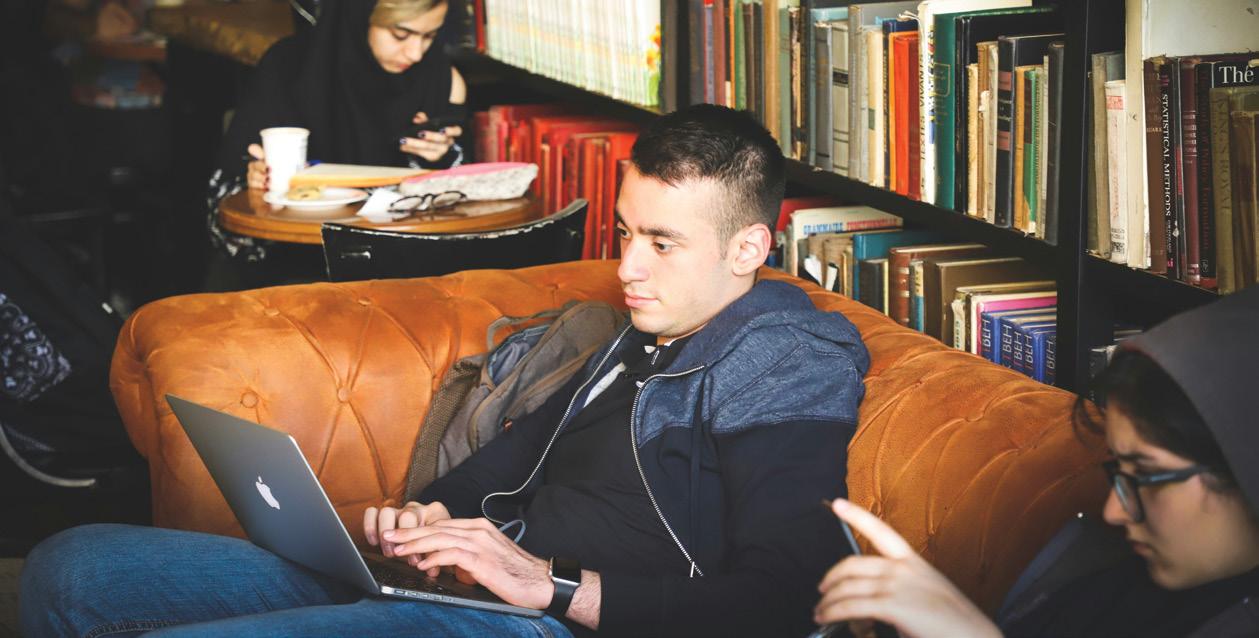
Perhaps a new CEO is minimizing your role or changing your title in order to engineer your exit without a big payout. Maybe you’re waiting for stock to vest or struggling to find the right new position before moving on. In any case, you are uncomfortable in this unfamiliar role: You feel stuck, instead of just in neutral.
Because executives are high achievers whose careers have often been linear progressions, they view success in black-and-white terms. My job is to help them live in the grays, using counsel based on the self-reliance and resilience I’ve earned in my 40 years as a freelancer.
Executive tip: Save yourself
I tell my C-suite clients that I had to learn the hard way that you can’t care more than they do. (“They” being whoever is in the hierarchy you’re dealing with.) Whether your instincts and experience on projects are not being valued because of CEO ego, corporate groupthink, or data blindness, you job isn’t to save that project, but to save yourself. Have the self-respect to hold your ideas for the right audience. It is impossible to inspire the disinterested, and trying will only make you feel like a failure when you never had a chance.
To paraphrase Hunter Thompson, you bought the ticket, now take the ride. You’ve done the work to earn your spot in the room, so now you have to find ways to continue to extract value. This is not Quiet Quitting. It’s actively accepting where you are right now and putting effort into finding the benefits that are undoubtably there—because there’s always a worthwhile takeaway, even in difficult situations. When there’s a lack of positive engagement with your hierarchical C-suite colleagues, turn your energy toward the people who report to you—those who may hold your experience in greater esteem. Call for general brainstorming sessions just to hear their ideas, participate in their project development at earlier stages instead of waiting for fully baked ideas to hit your desk, make the time to be a better mentor. Not only will this enrich your current situation, when you go off to another executive position, you may find yourself in need of their skills, which you now better understand; and their loyalty, which you’ve now earned.
Executive tip: Incremental accomplishments
To equate your own success with the successful completion of an idea that’s accomplished by a
group will break your heart. You have to find value in incremental accomplishment. When you are not able to control a project’s final execution, it’s useful to break your idea-to-implementation process down into stages and acknowledge your accomplishment at each interval (to yourself). That way, even when the idea doesn’t work the way you envisioned— and it rarely does—you will still feel some sense of satisfaction, instead of judging your own success by the secondary work of others.
Executive tip: Highlight reel
Be sure to create a highlight reel. In addition to the detailed multipage résumés they already have (which most people won’t ever read completely), I urge my old clients to develop a one-pager that focuses on what they do best. Their super power. This clarity helps them—as well as their headhunters—direct their job search. To make the information easier and more interesting to read, I always suggest they hire a designer. A good one. Because these days, you are your own retail footage. Invest in your storefront.
SP ECI ALS’ TH E E DITION
NE W




By bazaar Staff
The culinary world is undergoing a revolution, and home kitchens are no exception. As modern appliances redefine the cooking experience, there’s a rising demand for high-performance tools that not only simplify the process but also seamlessly integrate into the aesthetics of today’s homes. In Kuwait, Xcite has established itself as the go-to destination for innovative kitchen appliances, offering the latest in culinary technology.
Whether you’re an aspiring chef or a home cook, Xcite’s selection of top-tier appliances will help you take your kitchen to the next level. Here’s a look at some of the must-have products available at Xcite that align with today’s top culinary trends.

High-Performance Ovens: Precision in Every Bake
Modern ovens have become an essential part of the culinary experience, and Xcite offers a variety of high-performance models from leading brands like Bosch, Beko, and Lagermania. These ovens are equipped with advanced cooking modes, including convection, steam, and air frying, ensuring perfect results for everything from baking to roasting.

Blenders and Food Processors: Versatility in the Kitchen
Versatile kitchen tools are a necessity for today’s cooks, and Xcite’s range of blenders and food processors from Kenwood, Braun, Philips, and KitchenAid are designed to make food prep easier and more efficient. From creating smoothies to pureeing soups, these appliances are staples that no kitchen should be without.

Coffee Makers: Brew Like a Barista Coffee culture has taken the world by storm, and Xcite’s collection of coffee makers brings café-quality brewing into your home. With top brands like Nespresso, Philips, and Delonghi, you can enjoy everything from rich espressos to creamy cappuccinos without stepping outside.

Air Fryers: Healthy Cooking with a Crunch
The air fryer trend shows no signs of slowing down, and for good reason. These appliances offer a healthier alternative to traditional frying, using minimal oil to achieve that signature crunch. Xcite’s range of air fryers from brands like Philips, Nutricook, and Tefal allows you to prepare your favorite meals guilt-free, with all the flavor and none of the excess oil.
Stand Mixers: The Baker’s Essential
For those who love to bake, a high-quality stand mixer is a game-changer. Xcite stocks some of the best models from KitchenAid and Black & Decker, perfect for tasks ranging from kneading dough to whipping cream. These mixers come in a variety of colors and styles, adding both functionality and a pop of personality to your kitchen. At Xcite, they understand that the kitchen is the heart of every home, and they provide you with the finest appliances to enhance your culinary journey. Visit Xcite’s stores across Kuwait or explore their online platform to discover the perfect kitchen tools that match your needs and style. With a wide range of products from worldrenowned brands, Xcite ensures your kitchen stays at the forefront of culinary trends.

Stay updated on the latest events, monthly promotions and offers by subscribing to the monthly newsletter on xcite.com, follow Xcite’s social media channels on Instagram, Twitter, TikTok and Snapchat, @xcitealghanim or Facebook at XcitebyAlghanim and win prizes with contests, or visit the online store at www.xcite.com.

Clinically proven to significantly improve deep wrinkles, fine lines, firmness, and elasticity in just one week, BEAR™ 2 offers fast, visible results. The Anti-Shock System™ ensures a personalized treatment that adapts to your skin’s needs, making the device both safe and effective. With five T-Sonic™ massage patterns, the BEAR™ 2 enhances skin rejuvenation -- great for anyone looking for a spa-like experience in the comfort of their home.

The Tile Slim 2024 brings convenience and peace of mind with its ultra-thin profile, designed to easily slip into your wallet, passport holder, or luggage. The Tile Slim 2024 offers a sleek, lightweight design great for tight spaces like wallets and passport holders. With an extended Bluetooth range of up to 350 ft, you can track your items from a distance without worry. Never lose track of your essentials with the Tile Slim 2024

Nikon works together with HERALBONY to present the limited edition Z fc series. The classic cameras are decorated in the bright patterns and hues of HERALBONY’s work. The mirrorless camera stands out with its colorful design and premium leatherette material for a retro yet elevated look.
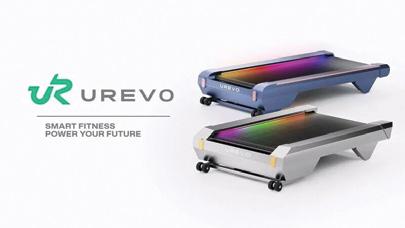
With its small footprint and ability to fit under a desk, this compact treadmill appeals to individuals who spend long hours seated and provides a convenient way to incorporate exercise into daily routine without interrupting workflow. One standout feature is the CyberPad’s sleek, cyberpunk-inspired design, which is complete with LED edge lighting and a motor positioned beneath the running deck to conserve space. Its maximum speed of 4.0 miles per hour makes it suitable for light exercise, while the 14% incline and nine elevation increments offer users more challenging workout options.

The XGIMI MoGo 3 Pro is a portable projector designed to offer high-quality visual and audio experiences in a compact form. It features a native 1080p resolution and supports HDR10, providing clear and vibrant images. The projector is equipped with a 300 ANSI lumens brightness, making it suitable for various lighting conditions. Additionally, it includes Harman Kardon speakers, which deliver robust sound quality, enhancing the overall viewing experience. The MoGo 3 Pro also runs on the Android TV operating system, offering access to a wide range of streaming services and apps.
Source: bestproducts.com

Get ready to stay connected and stylish with the Ray-Ban Meta Wayfarer smart glasses. These limited-edition wearables blend Ray-Ban’s iconic design with Meta’s cutting-edge technology for a seamless smart experience. ake calls, send messages, or listen to music. Switch between calls and audio without missing a beat. Snap quality photos and 1080p videos with the 12MP ultra-wide camera.




Islet is designed for CGM users to better understand blood sugar trends. It provides insights, glucose impact scores, and activity tracking to help you manage how meals, exercise, and daily activities affect your levels, making glucose control easier.
iOS only

“Stop asking ‘Honey, where’s my...?’ Chestly remembers so you don’t have to! Easily catalog and find your stuff with this smart organizer app. With Siri integration, your items are just a question away. Perfect for forgetful folks and busy households.”
iOS only




A beautiful weather app inspired by the Material Weather app on Android. Sleek design, 7-day forecast, and additional data on wind speed, UV index, etc.
iOS Only




Warranty Book App is a simple solution for securely managing all your warranty bills, purchase receipts in one convenient app. Keep track of your domestic item warranties, receive expiry notifications, and easily contact the dealer of the product or contact toll-free number, support numbers, support emails or company support portal.
iOS and Android


Take your watch collection with you, wherever you go. Whether you’re an enthusiast or a serious collector, Wroll offers a stylish way to experience and manage your collection.
iOS only



Get ready for weather that’s as fun as it is accurate with Brzzy Weather! Your personalized forecasts come alive with GIFs, hourly updates, and activity ratings that help you plan your day. Brzzy makes checking the weather a fun part of your day!
iOS only



By bazaar Staff







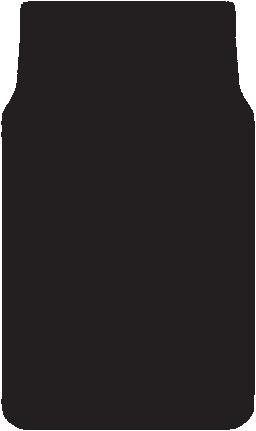







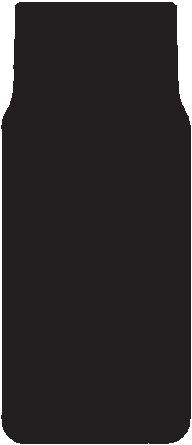



Cookie lovers unite, this is your moment! Get ready to indulge because Pepperidge Farm, the brand that has been delivering irresistible cookies for over 80 years, is hitting shelves in Kuwait. If you’ve been dreaming of that perfect bite—where butter y, crispy edges meet rich, velvety centers—your wish just came true. The iconic Pepperidge Farm cookies are here to make your snack time amazing.
Pepperidge Farm cookies are baked with tradition and heritage in mind. Their recipes have been perfected over decades, ensuring that every cookie you eat is made with the same love and care that founder Margaret Rudkin put into the very first loaf of bread she baked back in 1937. It’s this commitment to craftsmanship that has made Pepperidge Farm a beloved brand across the globe—and now, that legacy is part of Kuwait’s food culture.
Cookies are more than just a snack—they’re the perfect companion to life’s little moments. Whether it’s an afternoon tea with friends, a post-dinner dessert with the family, or a solo treat after a long day, Pepperidge Farm cookies fit right in. Their arrival comes at a perfect moment, just in time for all those cozy evenings at home, gatherings with loved ones, and those indulgent “me-time” moments when you just need something sweet.
Whether you’ve had the pleasure of tasting them before or this is your first time hearing about Pepperidge Farm, one thing is certain: these cookies are about to become your new obsession. With their arrival, the cookie game in Kuwait just reached a whole new level of deliciousness.
When you think of Pepperidge Farm, the first thing that comes to mind has to be the Milano cookie. This isn’t just any cookie—it’s a work of

art. The Milano is all about balance: delicate yet sturdy, sweet but never too sugary, with a perfect chocolate filling that melts in your mouth. Whether you’re enjoying them with a cup of tea, sneaking one (or three) during a busy day, or serving them at a gathering, the Milano always delivers.
These cookies have a kind of timeless elegance. They’re the little black dress of the cookie world—simple, chic, and always appropriate. Now that they’re available in Kuwait, you can elevate your snack time with that unmistakable Milano touch.
But Pepperidge Farm isn’t just about the Milano (even though we can’t stop raving about it!). They offer a whole collection of cookies that cater to every taste and craving:
Chessmen are a classic shortbread cookies as buttery as they come. They have a soft, crumbly texture and a delicate sweetness that pairs beautifully with coffee or tea. Plus, they’re stamped with elegant designs, making them as pretty as they are tasty.
For chocolate chip lovers, the Sausalito is where it’s at. This cookie is packed with chunks of rich chocolate and hearty nuts, giving you that classic cookie indulgence with a satisfying crunch.
Nantucket cookies from Pepperidge Farm are a delightful treat featuring a crispy texture and rich flavor. These cookies are loaded with decadent ingredients like rich dark chocolate and real vanilla extract. Perfect for snacking or dessert, they offer a memorable, indulgent experience. Enjoy them
with a warm beverage for a cozy treat!
Each cookie brings something unique to the table, and the best part? They’re all crafted with high-quality ingredients and that signature Pepperidge Farm attention to detail.
And let’s not forget how beautifully they pair with coffee. Imagine a plate of Milano or Sausalito cookies next to your latte at your favorite café or your own kitchen table—simple pleasures at their finest. Whether you’re curling up with a good book, enjoying a Netflix binge, or working from home, these cookies make every moment a little more special.
Get your cookie fix from roomserviceq8.com, major supermarkets and co-ops.
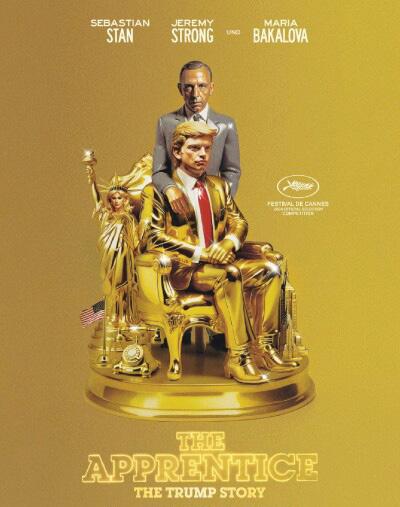
Genre: Biography, Drama
Cast: Jeremy Strong, Sebastian Stan, and Maria Bakalova
Synopsis: The story of how a young Donald Trump started his real-estate business in 1970s and ‘80s New York with the helping hand of infamous lawyer Roy Cohn.

Genre: Action
Cast: Mason Gooding, Dylan Sprouse
Synopsis: A returning war veteran, stricken with PTSD, unwittingly gets trapped with his teenage sister on Boston’s Tobin Memorial Bridge as a heavily weaponized group of ex-military revolutionist take everyone hostage.

Genre: Horror
Cast: Frank Grillo, Carrie-Anne Moss and Douglas Smith
Synopsis: Tells the story of a young man who has amnesia. He bands together with a rugged survivalist in a zombie-like outbreak to find his girlfriend.

Genre: Animation, Comedy, Family
Cast: Mo Gilligan, Simone Ashley
Synopsis: A pampered cat takes for granted the lucky hand he has been dealt after he is rescued and loved by Rose, a kind-hearted and passionate student.

Genre: Drama
Cast: Tom Hanks, Robin Wright
Synopsis: From the reunited director, writer, and stars of Forrest Gump (1994), Here is an original film about multiple families and a special place they inhabit. The story travels through generations, capturing the human experience in its purest form.

Genre: Music, Romance, Fantasy
Cast: Cynthia Erivo, Ariana Grande
Synopsis: After two decades as one of the most beloved and enduring musicals on the stage, Wicked makes its long-awaited journey to the big screen as a spectacular, generation-defining twopart cinematic event this holiday season.
Source: cinescape.com.kw


In John Grisham’s first work of nonfiction since The Innocent Man, “the master of the legal thriller” (Associated Press) teams up with Jim McCloskey, “the godfather of the innocence movement” (Texas Monthly), to share ten harrowing true stories of wrongful convictions.


Inspiring advice for navigating life’s ups and downs, and finding ways to grow every day — from the New York Times bestselling author of Set Boundaries, Find Peace and Drama Free.


In her long-awaited memoir, Ina Garten — aka the Barefoot Contessa, author of thirteen bestselling cookbooks, beloved Food Network personality, Instagram sensation, and cultural icon — shares her personal story with readers hungry for a seat at her table.

Source: Goodreads.com
A thrilling tick-tock recounting of one of the most harrowing hostage situations and daring rescue attempts of our time — from the true-life espionage master and New York Times bestselling author of Operation Mincemeat and The Spy and the Traitor.
From the Pulitzer Prize-winning author, an alarming account of how autocracies work together to undermine the democratic world, and how we should organize to defeat them.
From one of the most iconic actors in the history of film, an astonishingly revelatory account of a creative life in full.
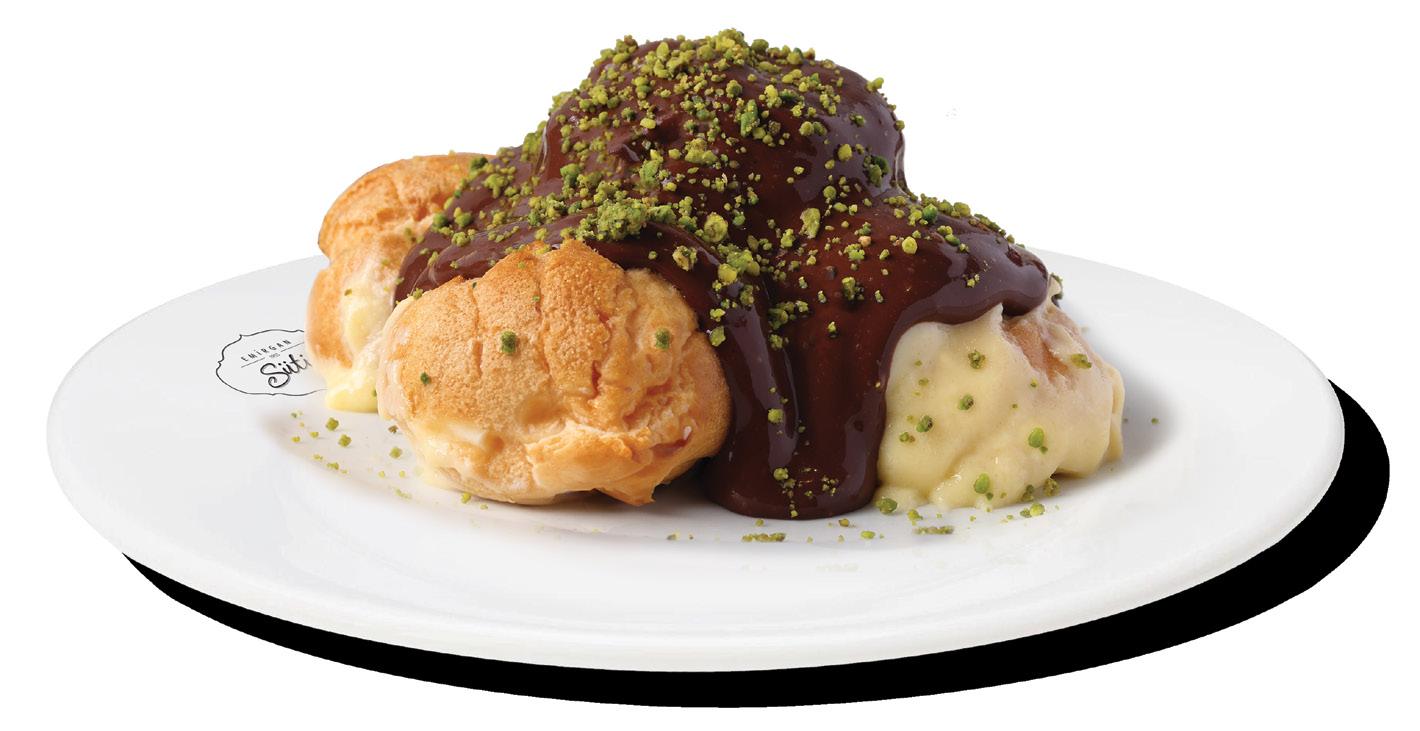


OCT 23 – NOV 22
This month empowers you to embrace your personal power and authenticity. With the Sun illuminating your sign, you’ll radiate confidence and clarity about your identity and goals. Additionally, trust in your intuition and take decisive action to pursue your desires. Remember, authenticity is your superpower, so honor your truth and let your light shine brightly for all to see.
SAGITTARIUS NOV 23 - DEC 21
This month invites you to retreat and recharge your energies. Furthermore, with Jupiter in the sector of your chart associated with spirituality and solitude, it’s time to connect with your inner wisdom. You can do this through meditation or introspection. Trust in the guidance of your intuition, and surrender to the flow of the universe. Remember, true wisdom comes from within, so take time to listen to the whispers of your soul.
CAPRICORN DEC 22 – JAN 19
This month emphasizes the importance of social connections and community involvement. With Mars igniting the sector of your chart associated with friendship and teamwork, you’ll feel motivated to collaborate with like-minded individuals toward common goals. Engage in networking opportunities and contribute your skills and talents to worthy causes. Moreover, remember, that meaningful connections enrich your life and support your growth.
AQUARIUS JAN 20 – FEB 18
This month shines a spotlight on your career and ambitions. Given that Mercury is activating the sector of your chart associated with professional aspirations, you’ll excel in communicating your ideas and advancing toward your goals. Furthermore, embrace opportunities for growth and innovation, and trust in your ability to manifest success. Furthermore, remember to stay true to your authentic self and pursue your passions with purpose.
PISCES FEB 19 – MAR 19
This month encourages you to embrace adventure and expand your horizons. With the New Moon energizing the sector of your chart associated with travel and exploration, it’s time to embark on new journeys and experiences. Trust in the guidance of your intuition and allow yourself to step outside of your comfort zone. Remember, life is an adventure waiting to be explored, so embrace the unknown with courage and curiosity.
MAR 20 – APR 19
With Mars, your ruling planet, igniting the sector of your chart associated with career and ambition, you’ll experience a surge of vitality and determination. This month, seize the opportunities that come your way and take bold strides toward your goals. Additionally, Remember, that patience and diplomacy will be your allies as you navigate the challenges that may arise in your path to success.
APR 20 – MAY 20
This month highlights themes of love and domestic harmony. Furthermore, with Venus gracing the sector of your chart associated with home and family, you’ll find joy and fulfillment in nurturing your closest relationships. Additionally, take time to cultivate an atmosphere of warmth and affection in your home environment. Moreover, trust in the power of love to bring you closer to those who matter most to you.
21
This month encourages you to broaden your horizons and expand your intellectual pursuits. With Mercury, your ruling planet, activating the area of your chart associated with higher learning and communication, you’ll feel inspired to seek out new knowledge and experiences. As a result, embrace opportunities for travel, education, or philosophical exploration. Additionally, engage in meaningful conversations that stimulate your mind and broaden your perspective.
This month directs your attention toward matters of finance and security. With the New Moon illuminating the sector of your chart associated with money and resources, it’s time to assess your financial situation and set realistic goals for the future. Additionally, take practical steps to budget wisely and save for your long-term stability. Ultimately, trust in your ability to manifest abundance and prosperity through diligent effort and careful planning.
JUL 23 – AUG 22
This month emphasizes the importance of partnerships and interpersonal connections. As the Sun shines a light on the sector of your chart associated with relationships, you’ll experience a deepening of bonds with your significant other or business associates. In addition, communication will be key in fostering understanding and cooperation. Therefore, remember to express your appreciation for the support and companionship of those who stand by your side.
This month invites you to prioritize your health and well-being. Additionally, With the Full Moon illuminating the sector of your chart associated with wellness, it’s time to pay attention to your physical and emotional needs. Therefore, establish healthy habits that nourish your body, mind, and soul. Furthermore, take time to rest and recharge, and don’t hesitate to seek out professional support if needed. Ultimately, remember, self-care is essential for maintaining balance and vitality.
This month encourages you to tap into your creative expression and joy. Moreover, with Venus gracing the sector of your chart associated with creativity and pleasure, you’ll find inspiration in artistic endeavors and leisure activities. Embrace your unique talents and allow yourself to indulge in experiences that bring you happiness. Additionally, share your gifts with others and bask in the beauty and abundance that surrounds you.


